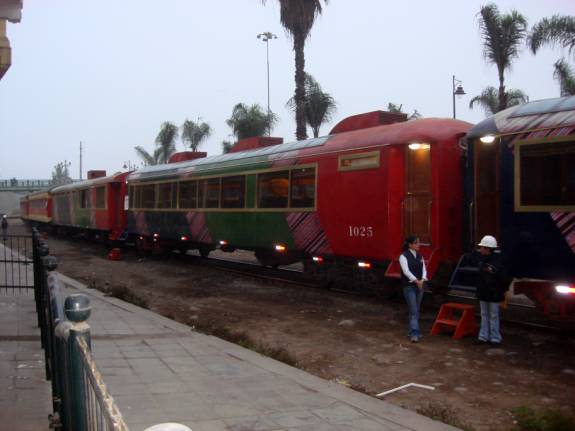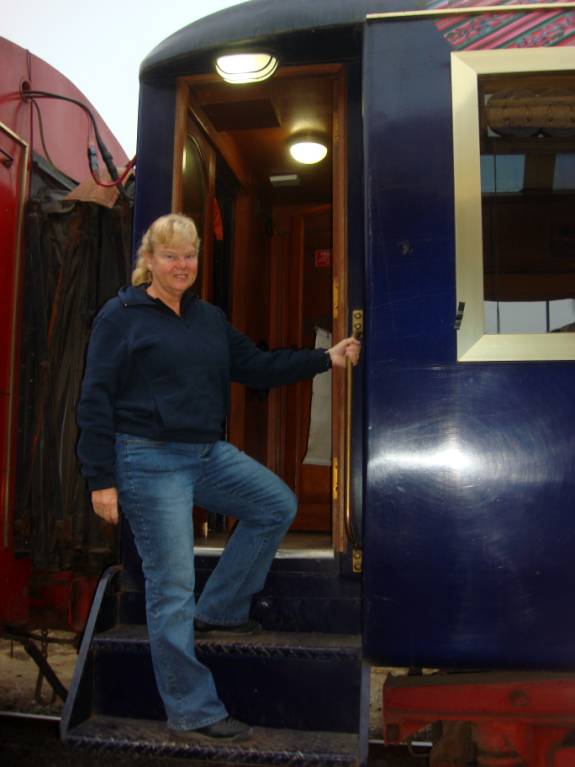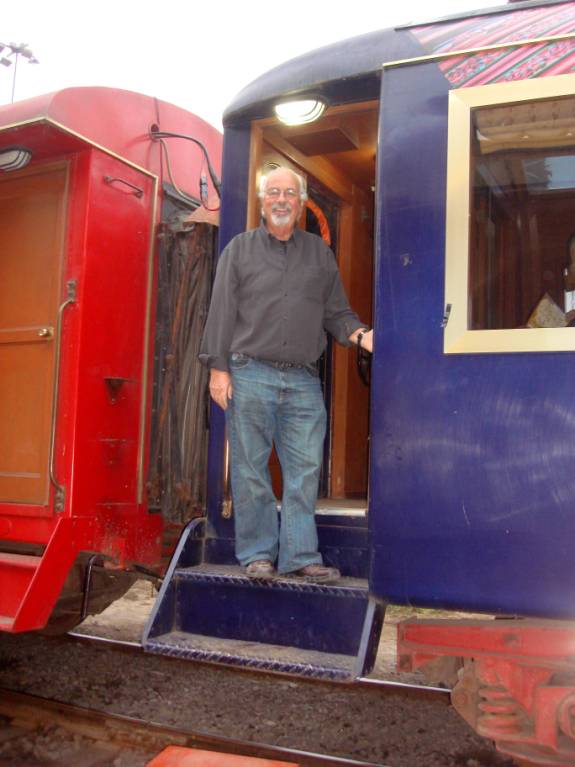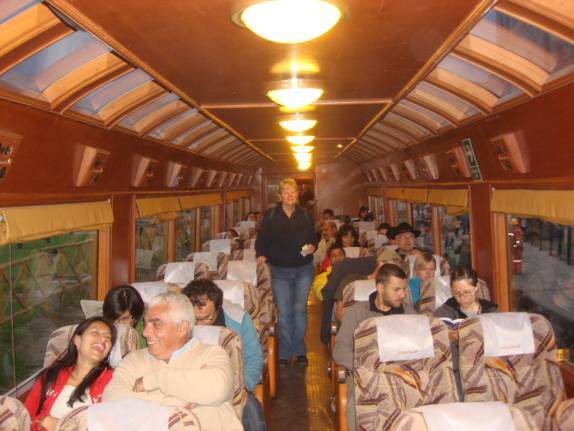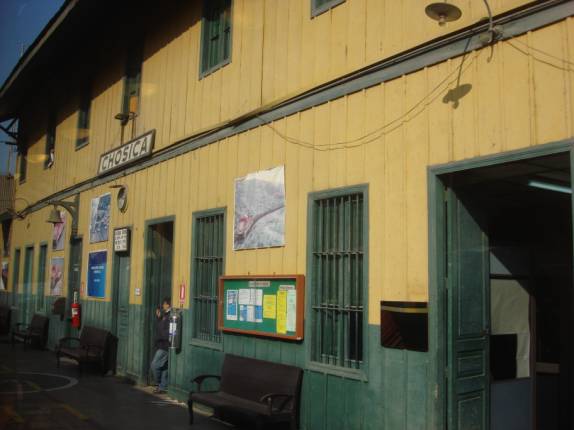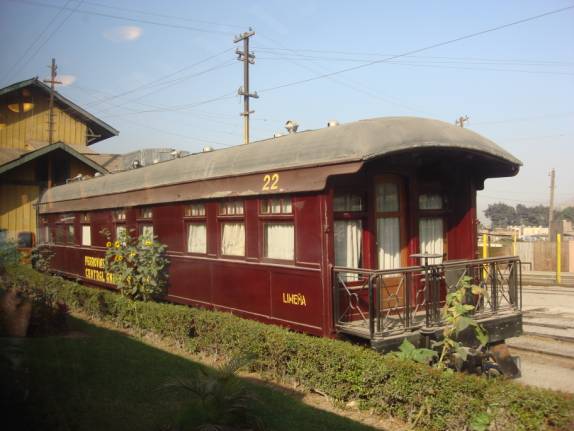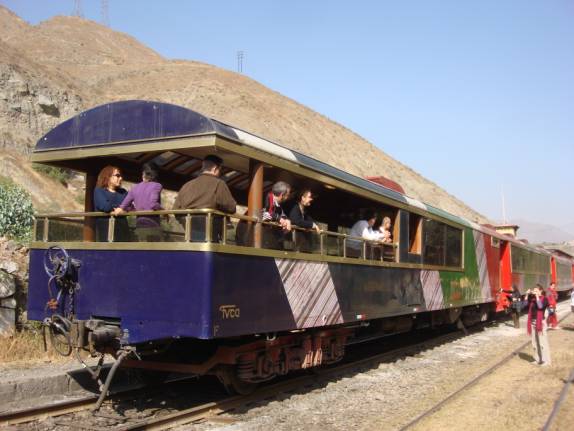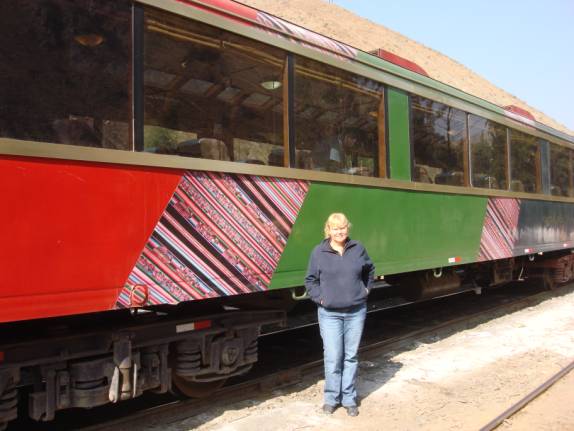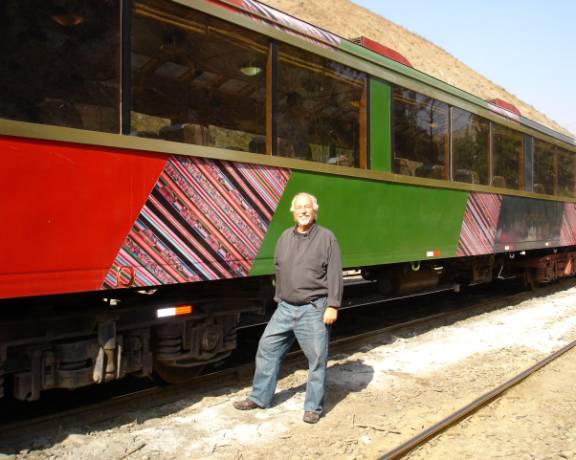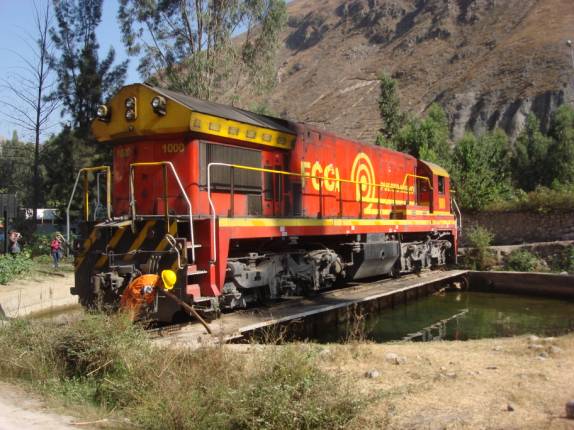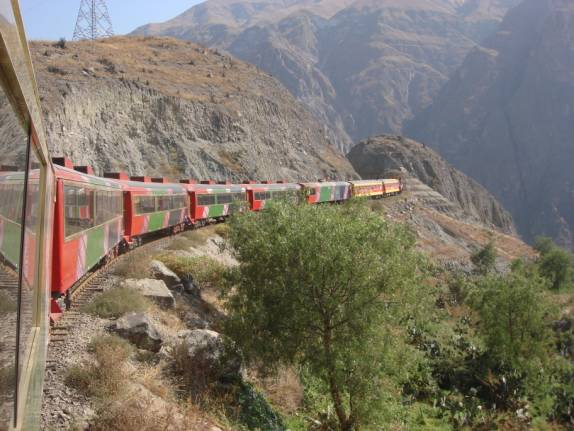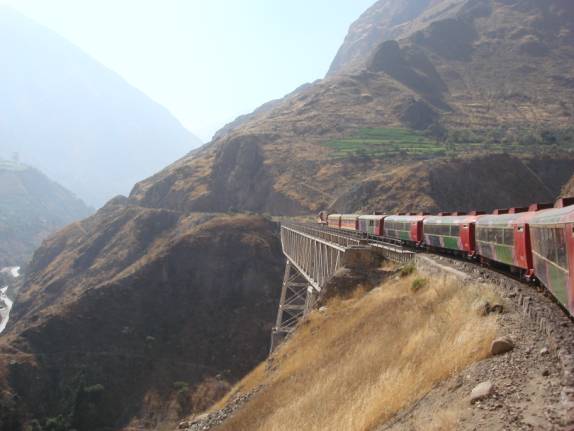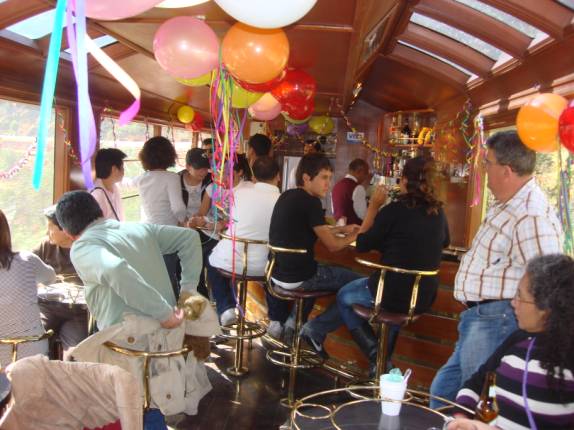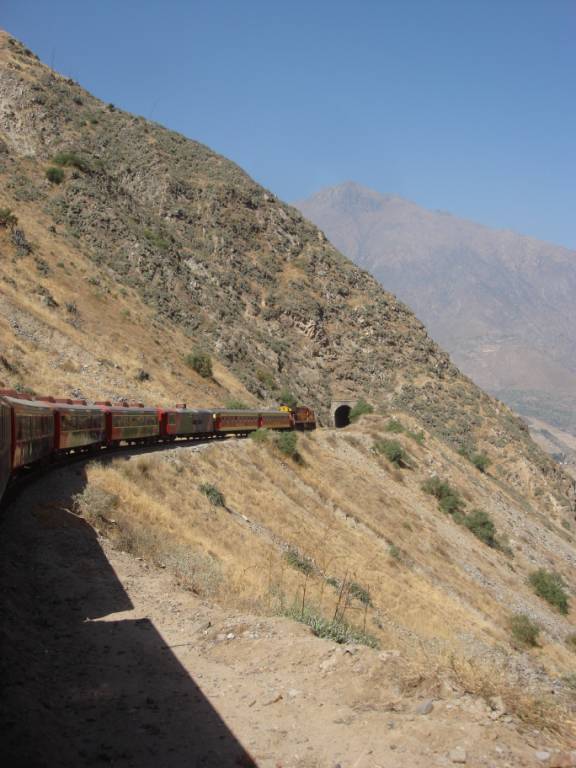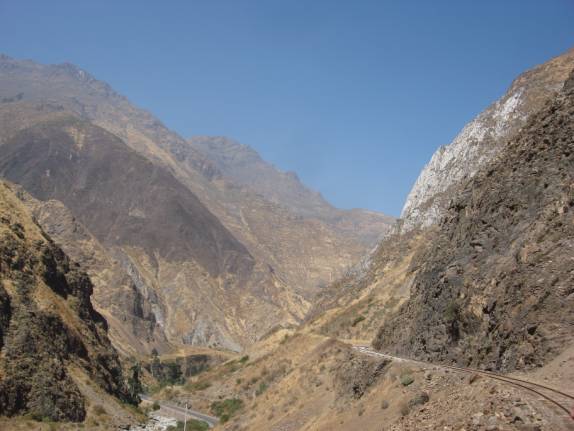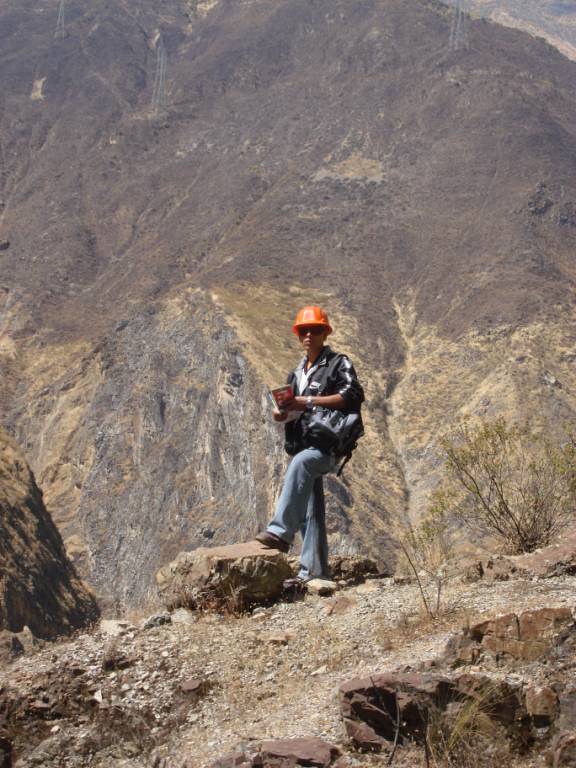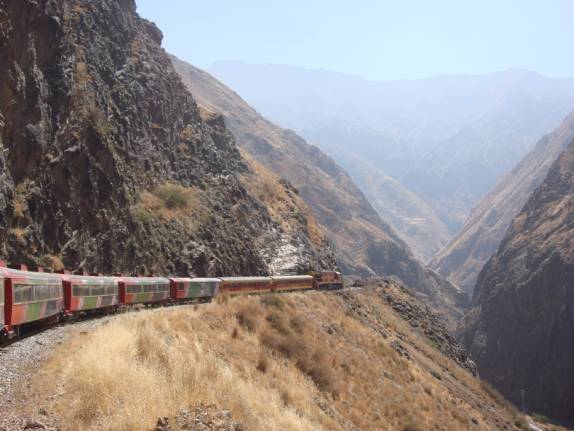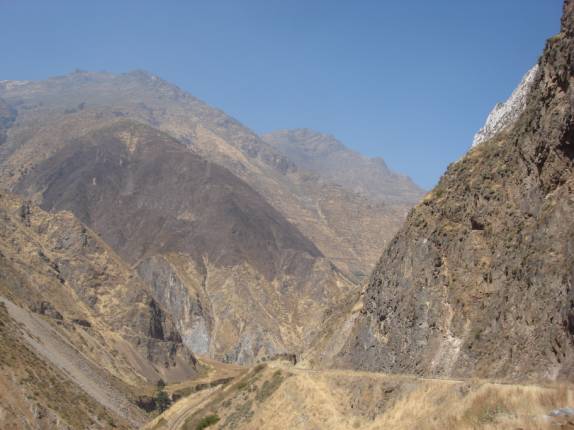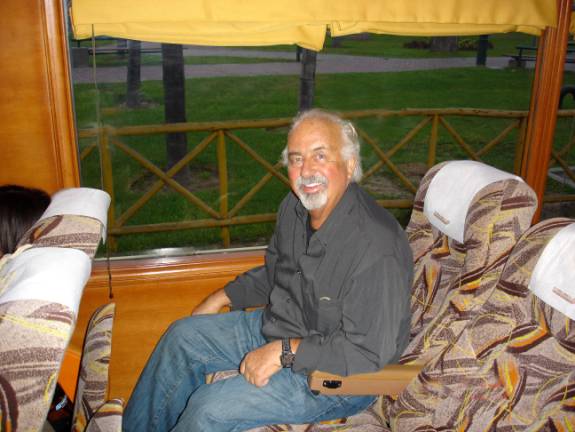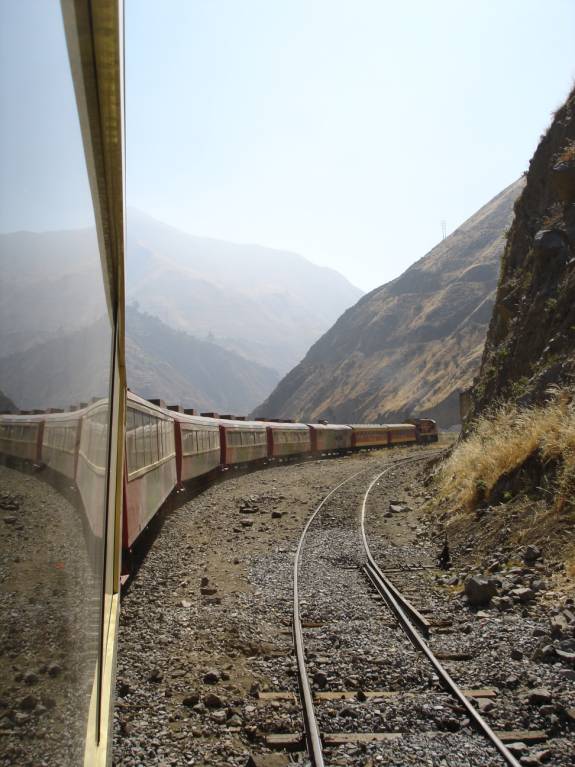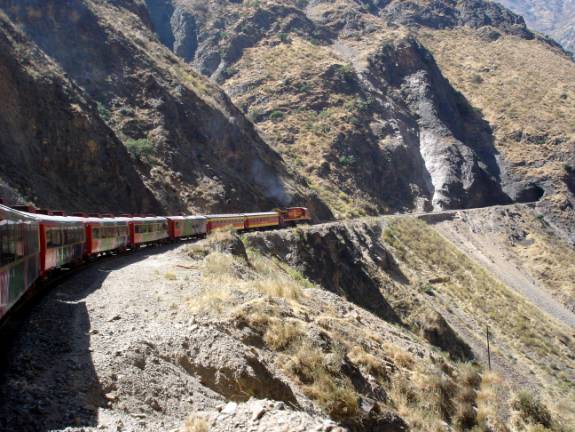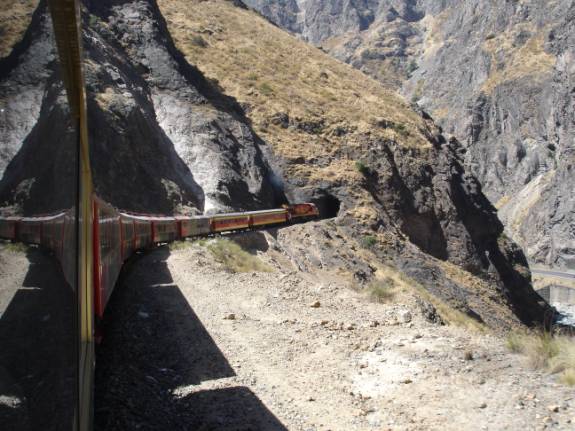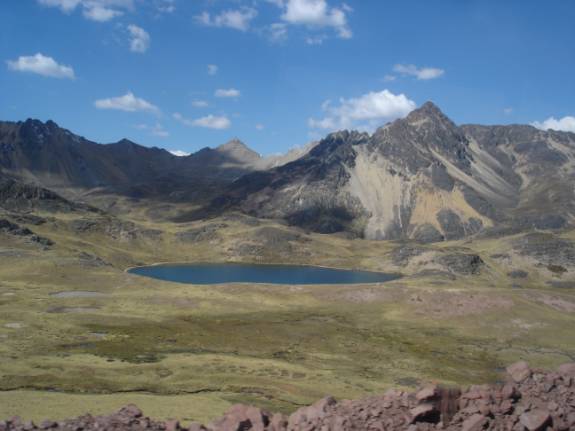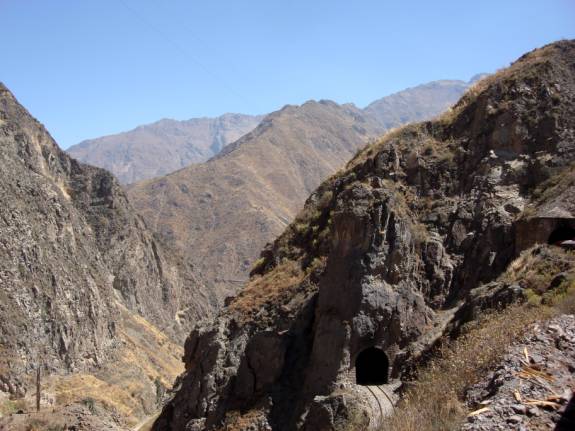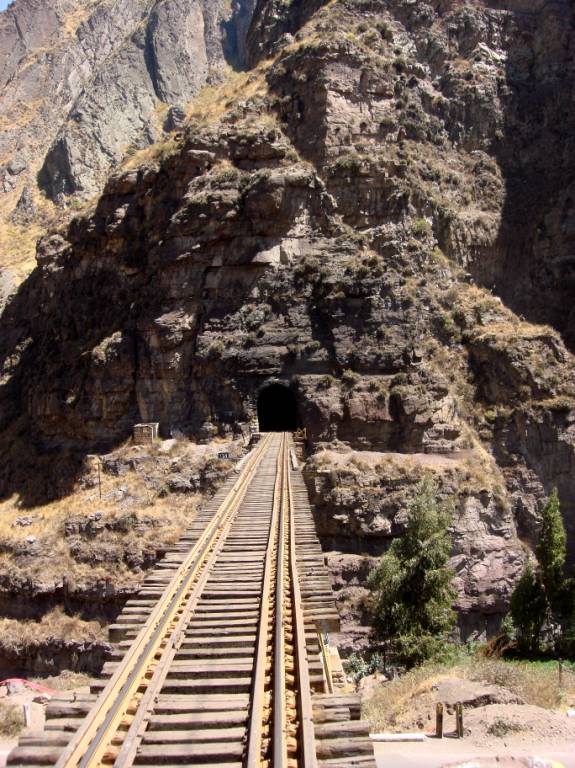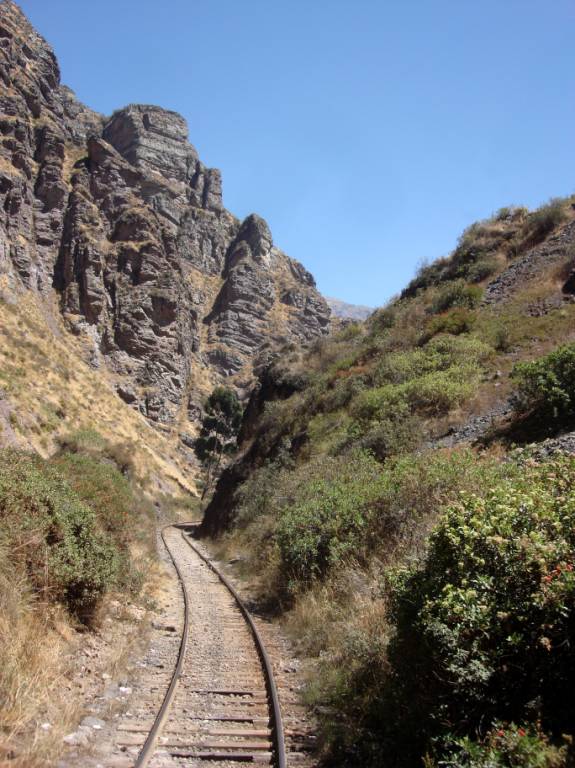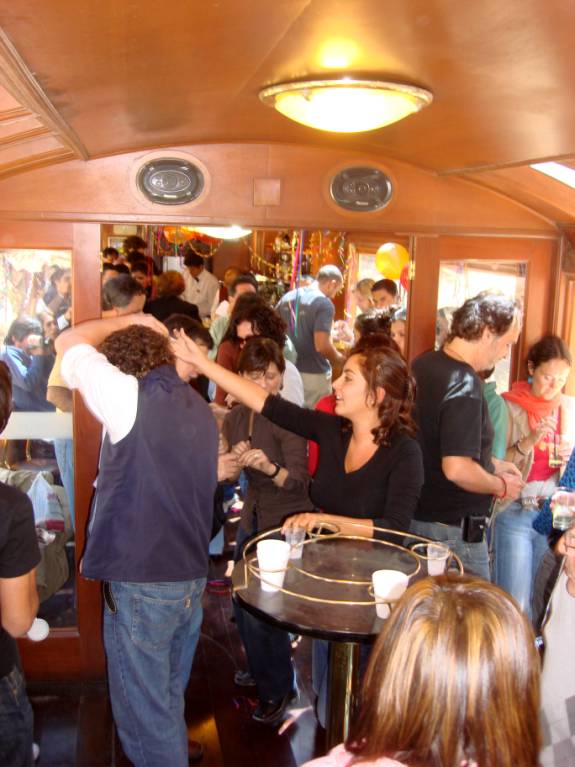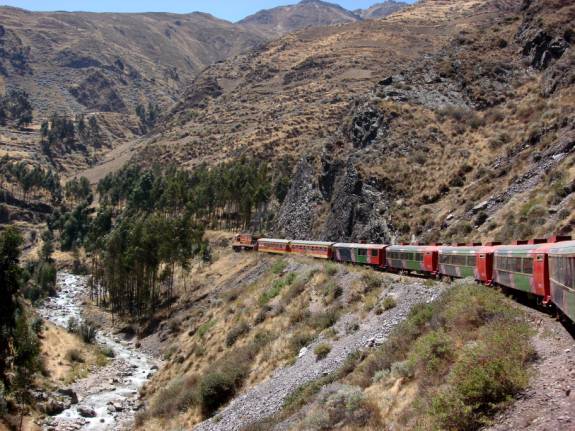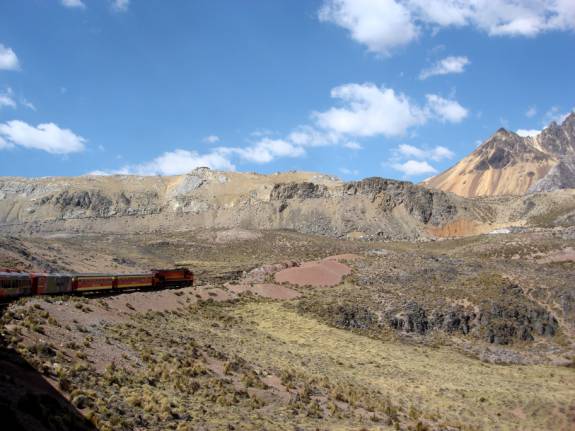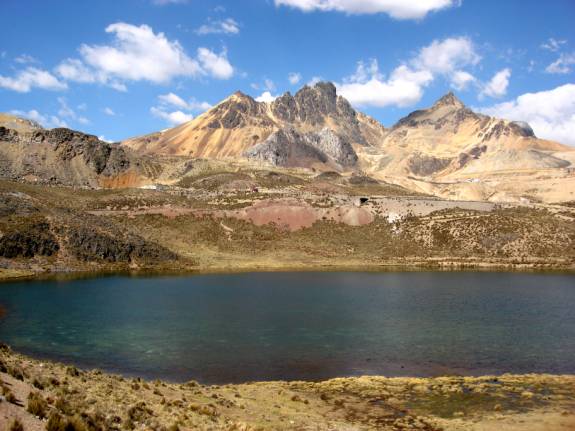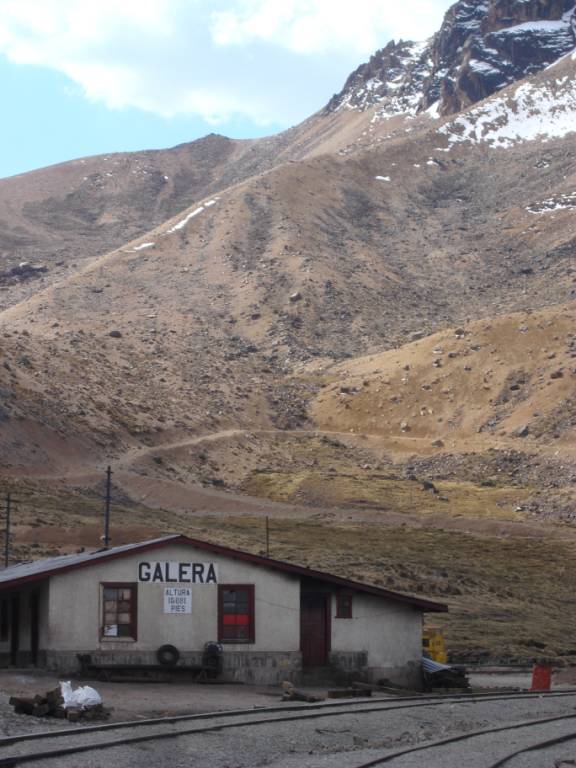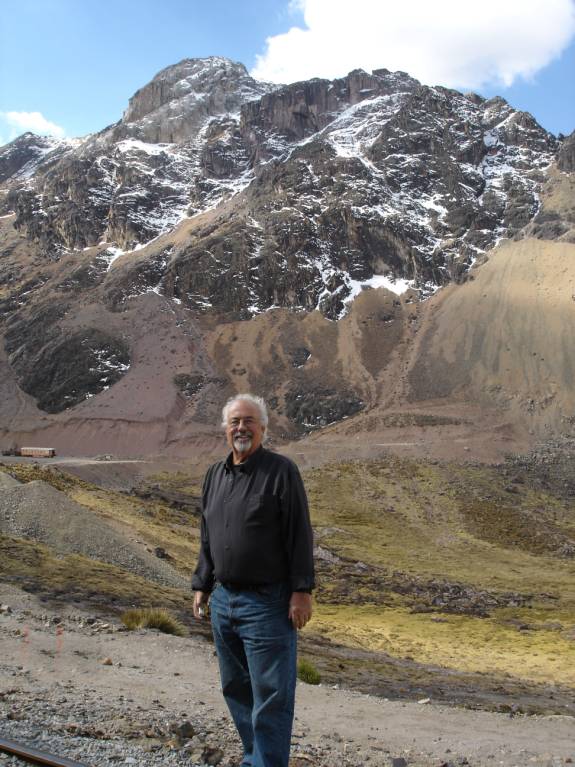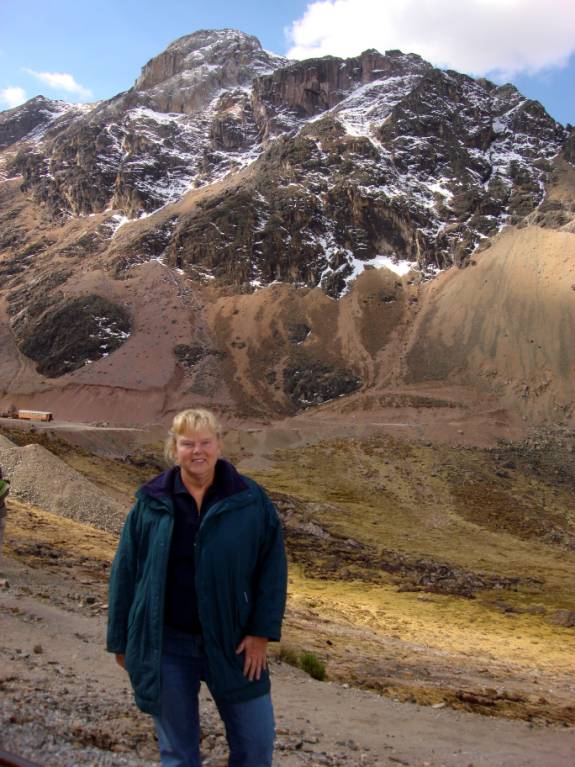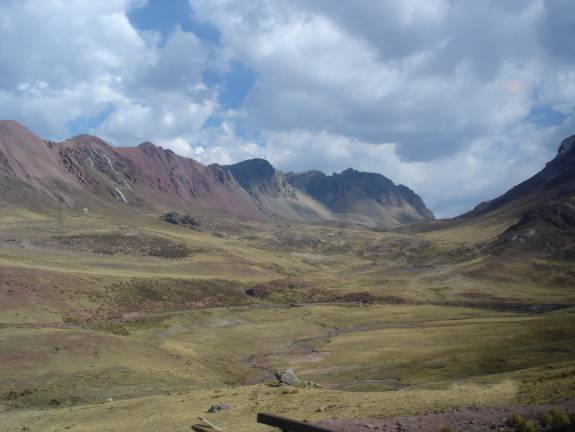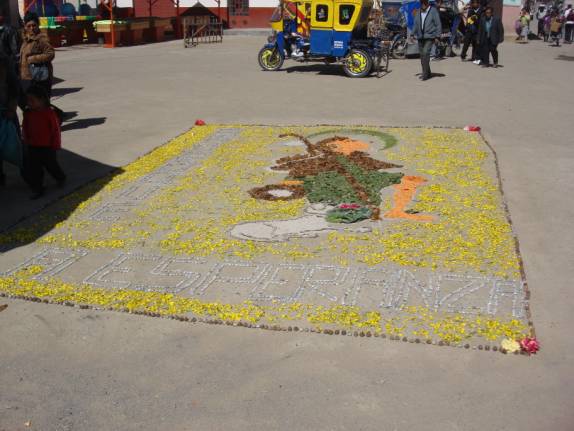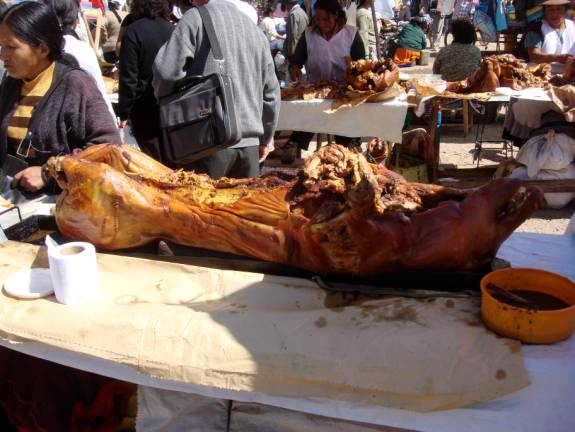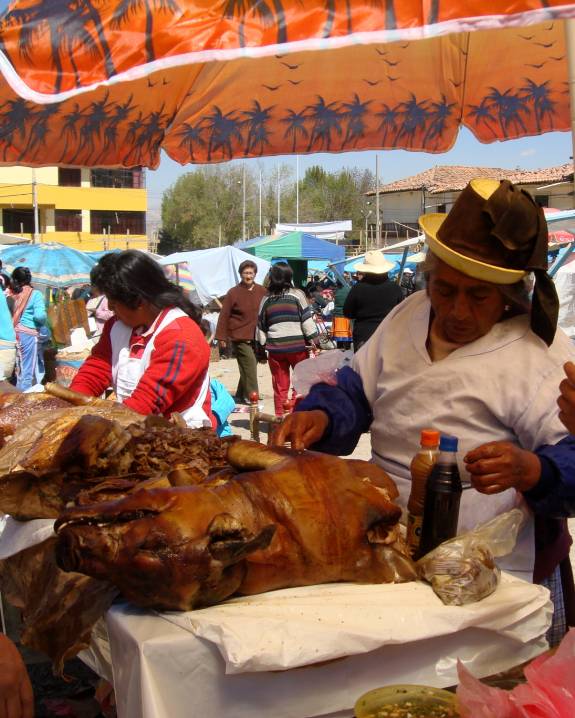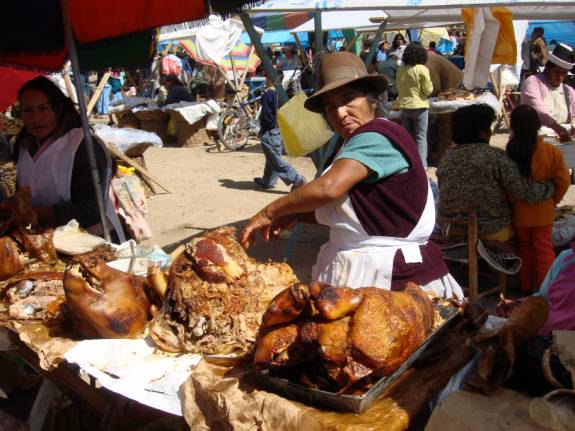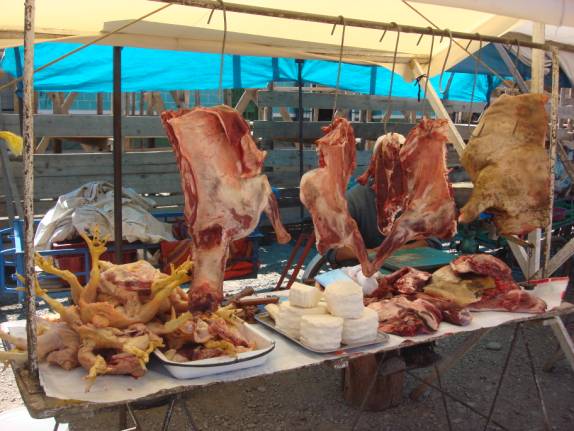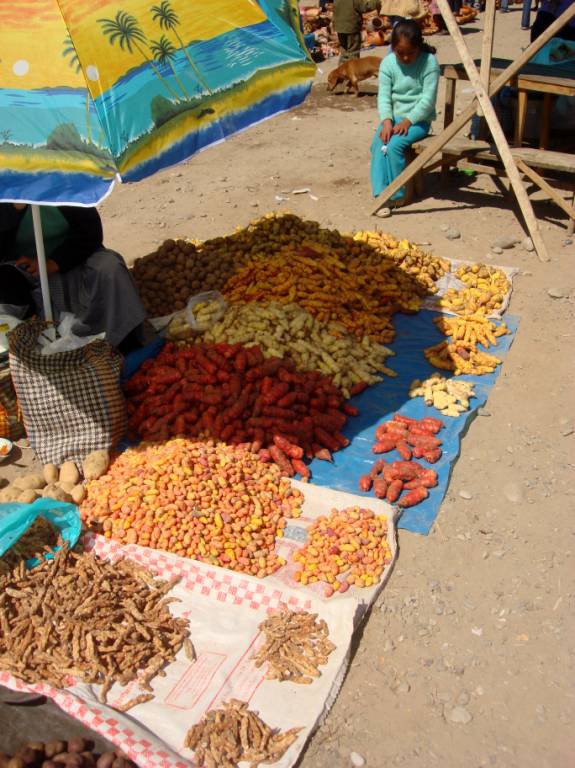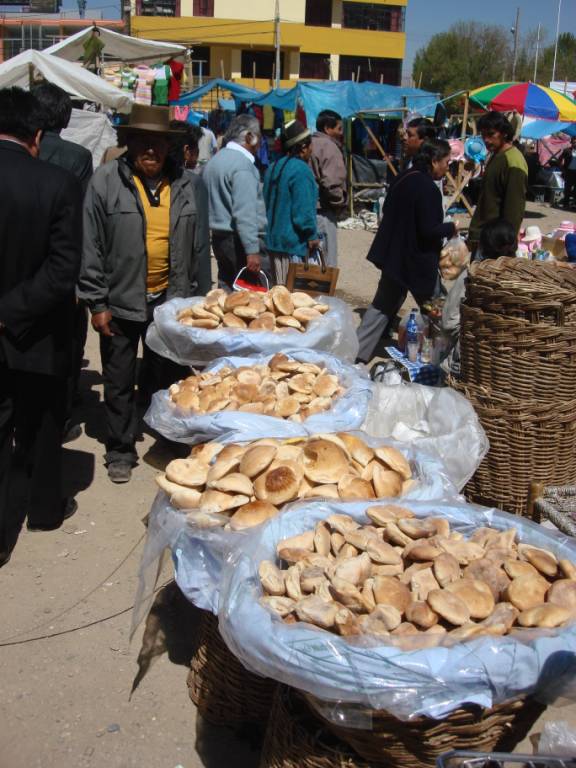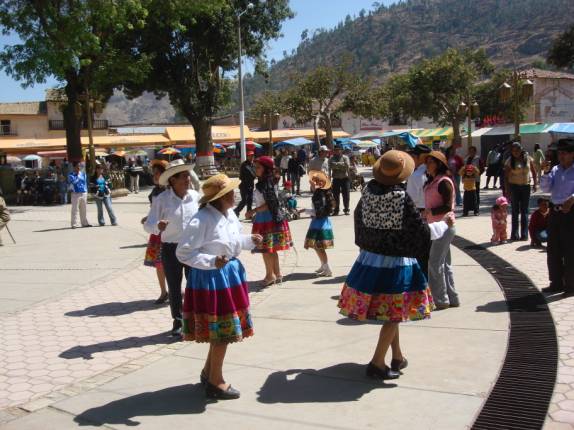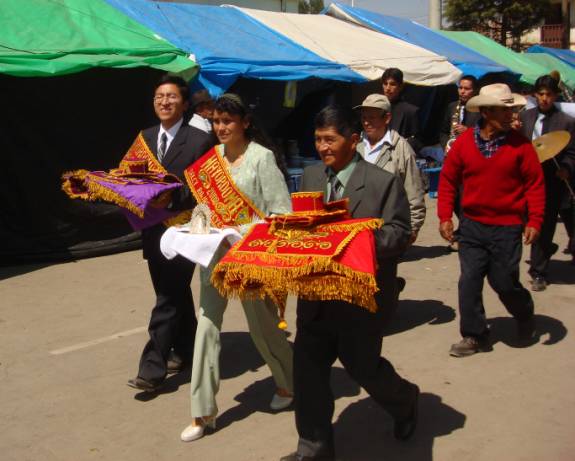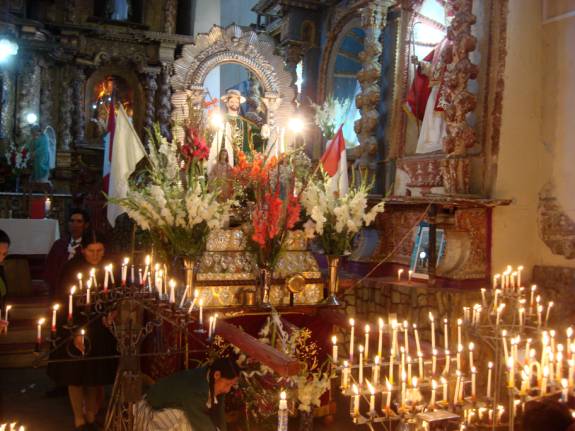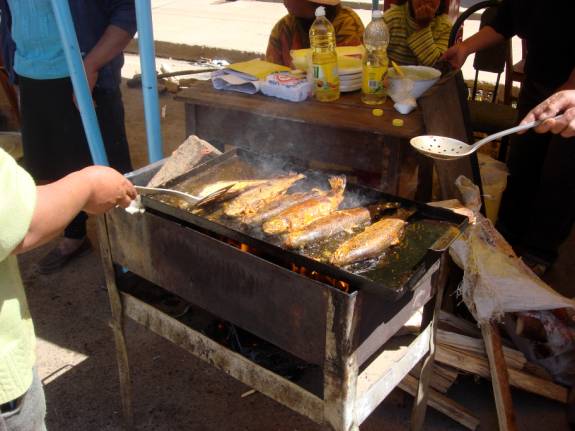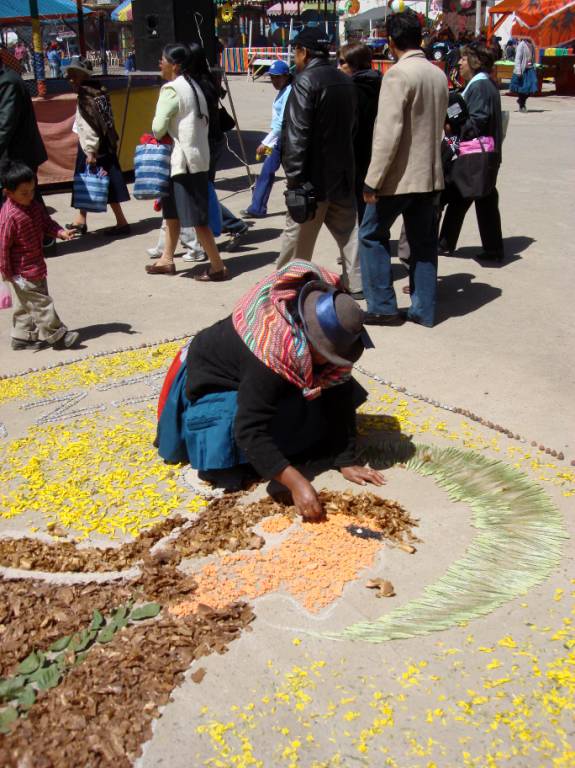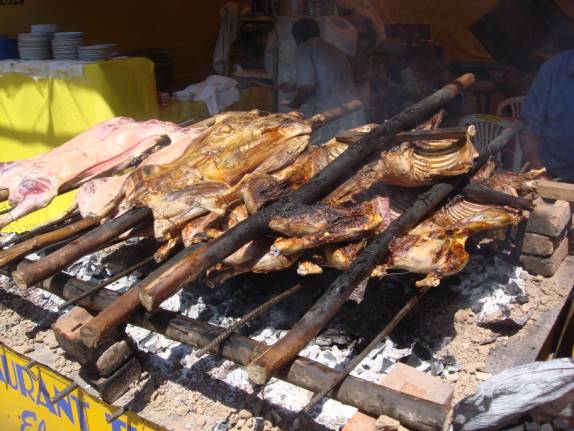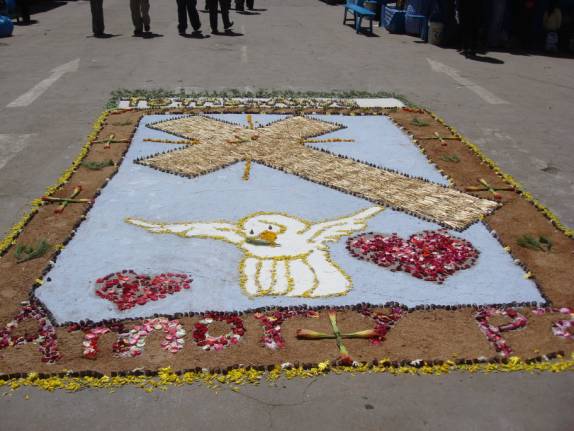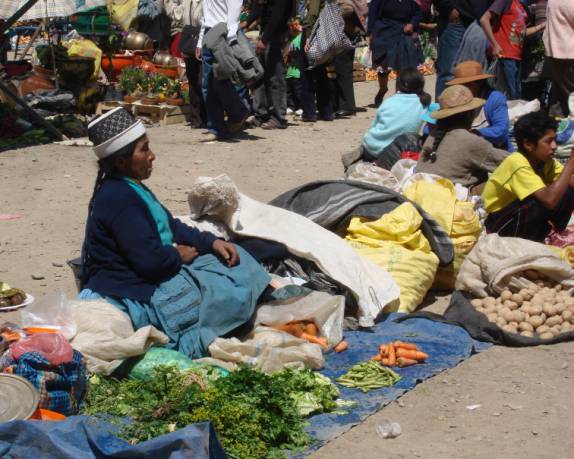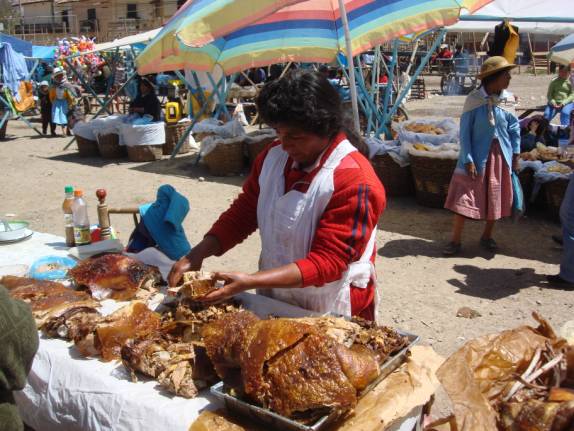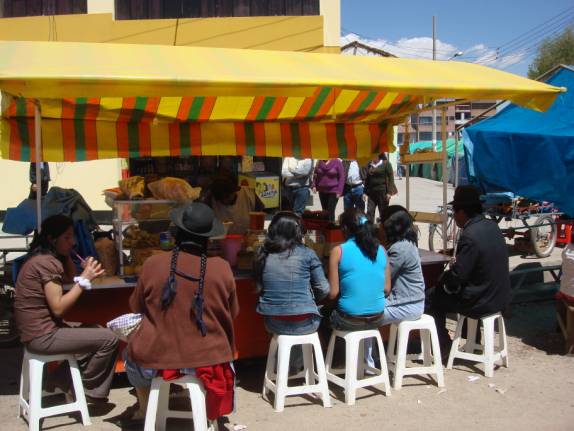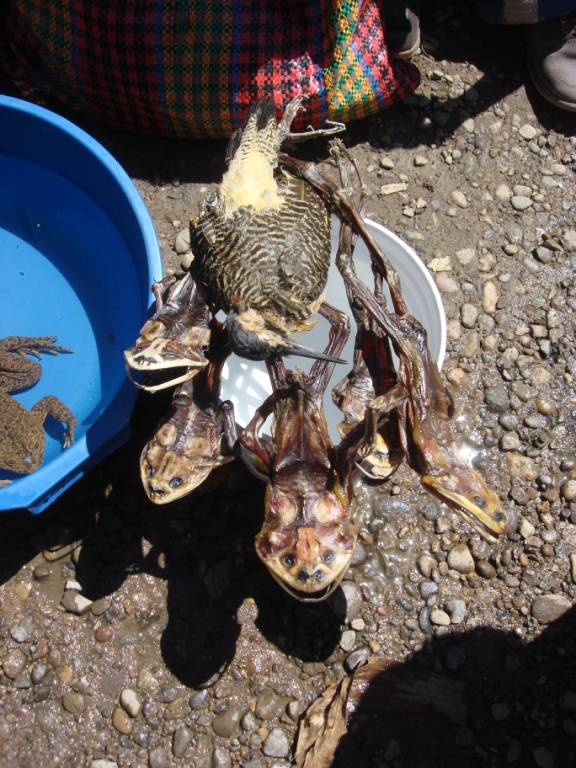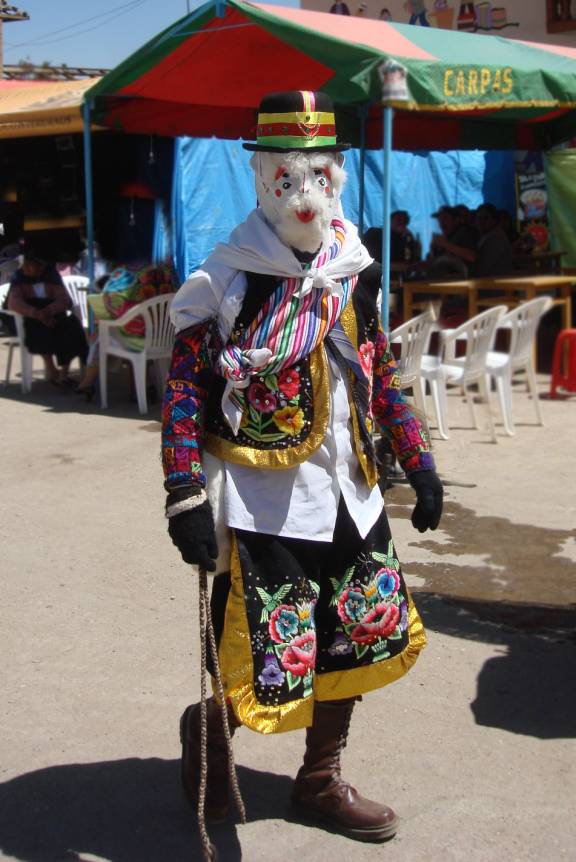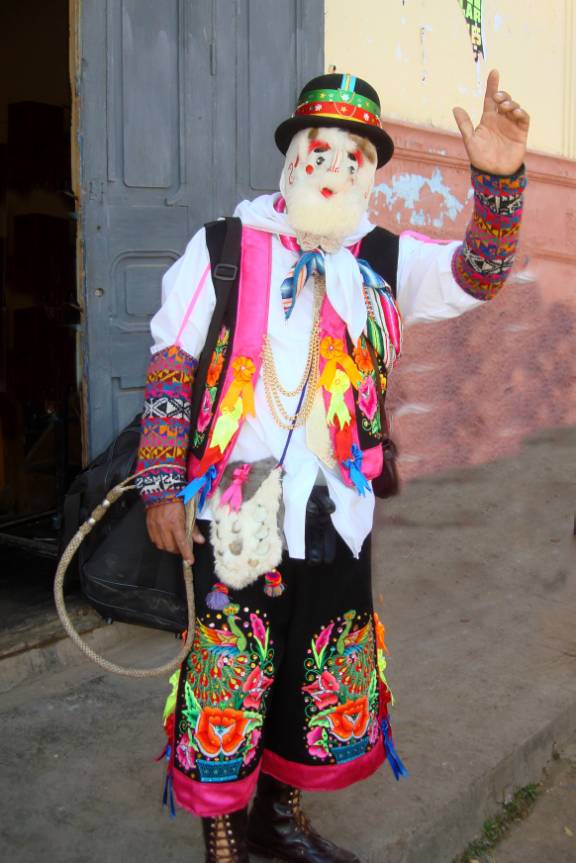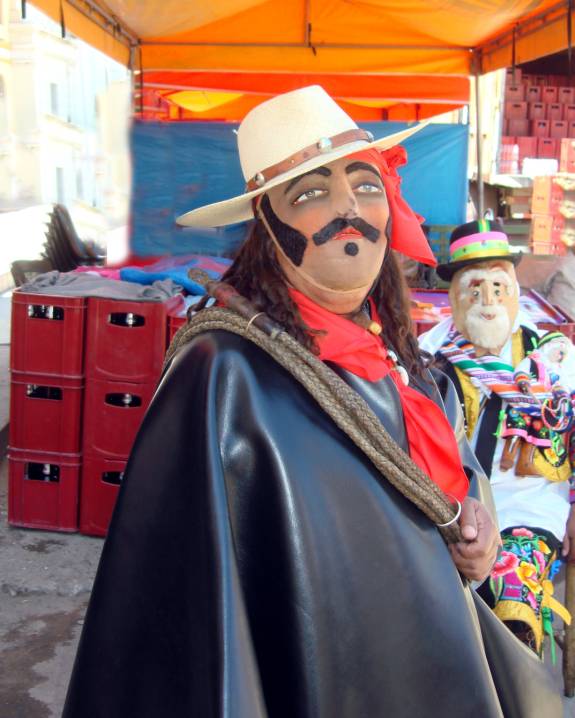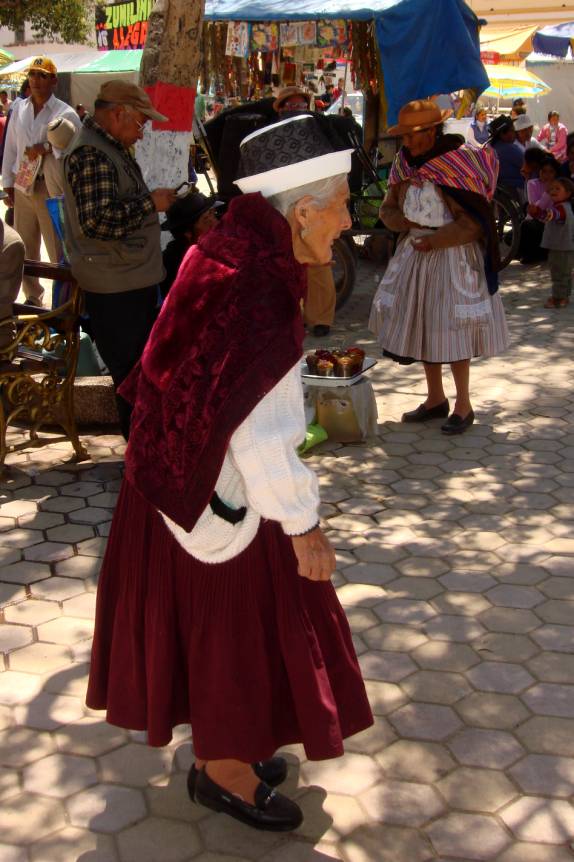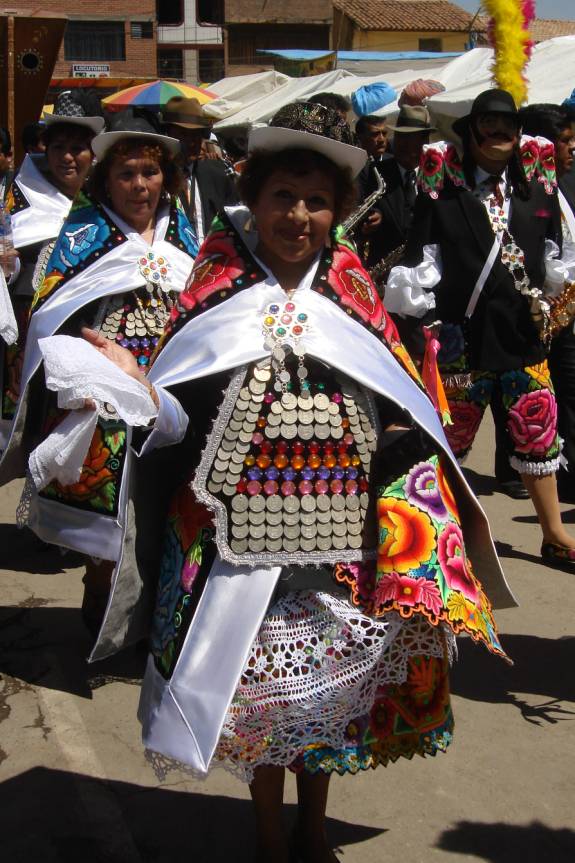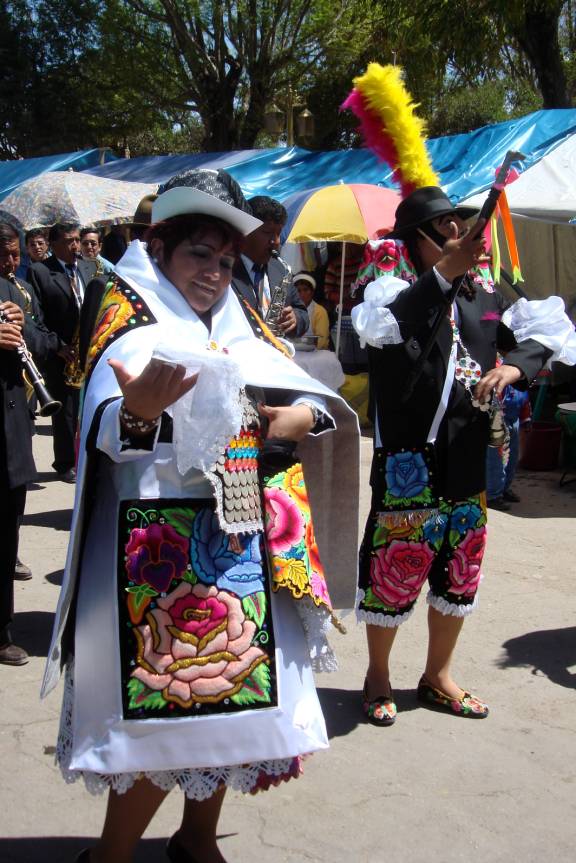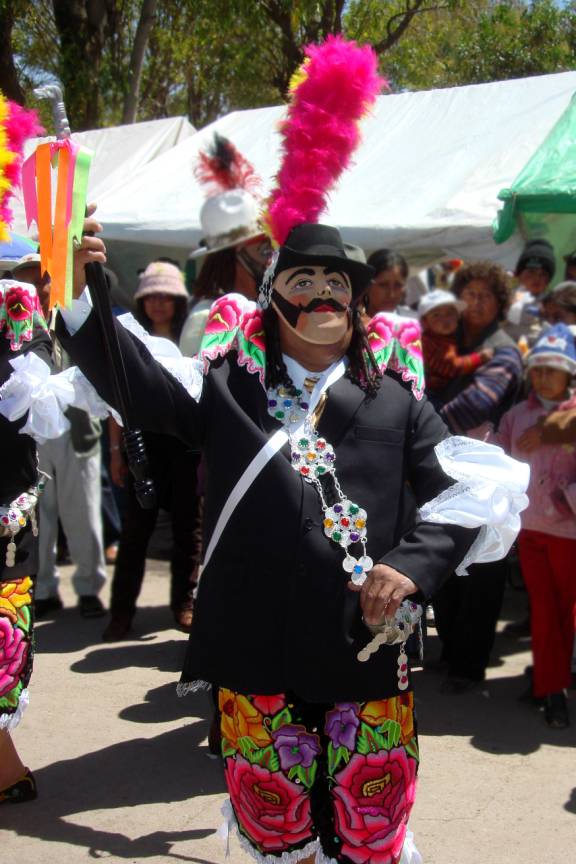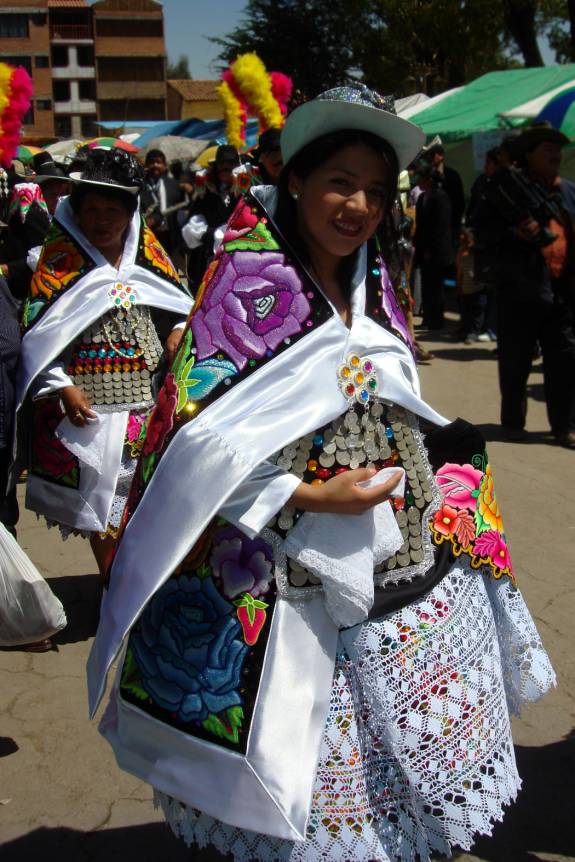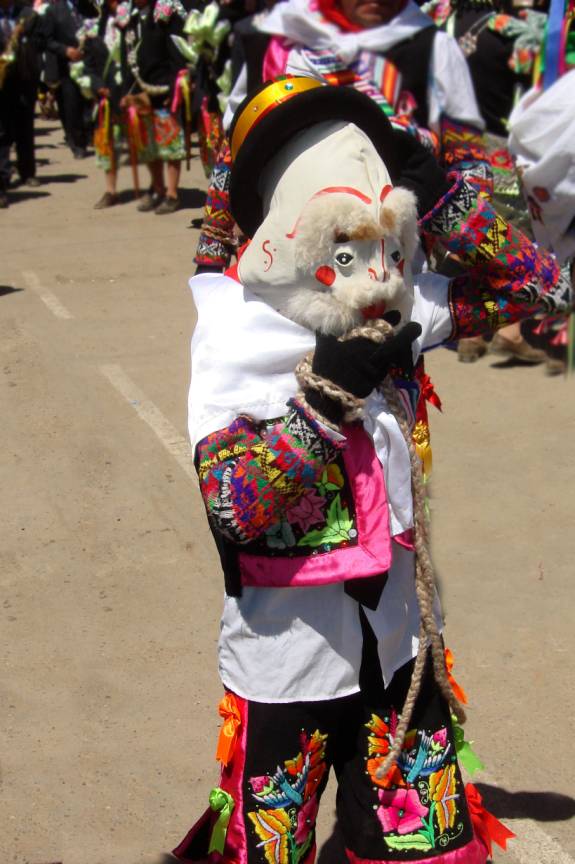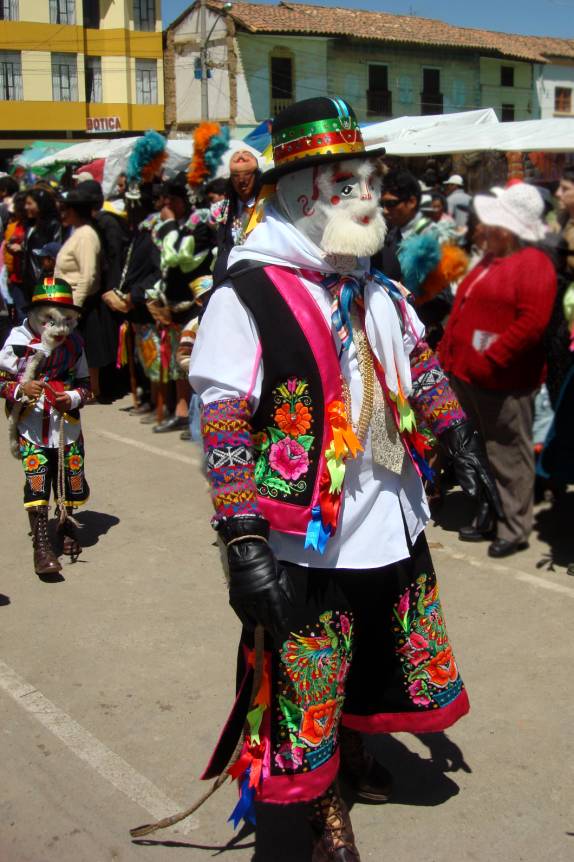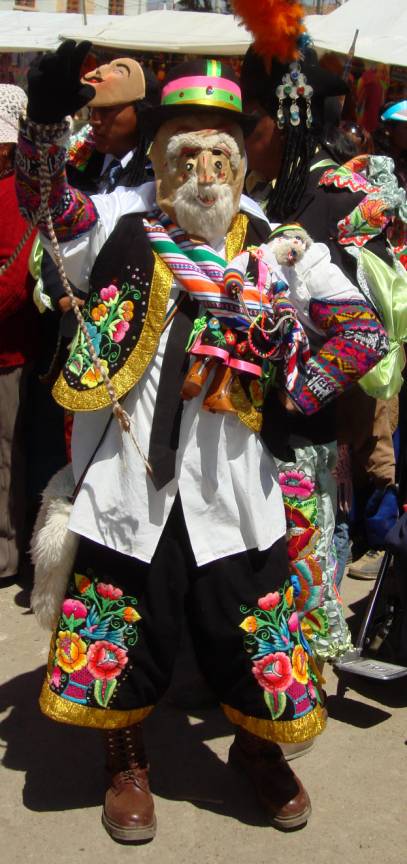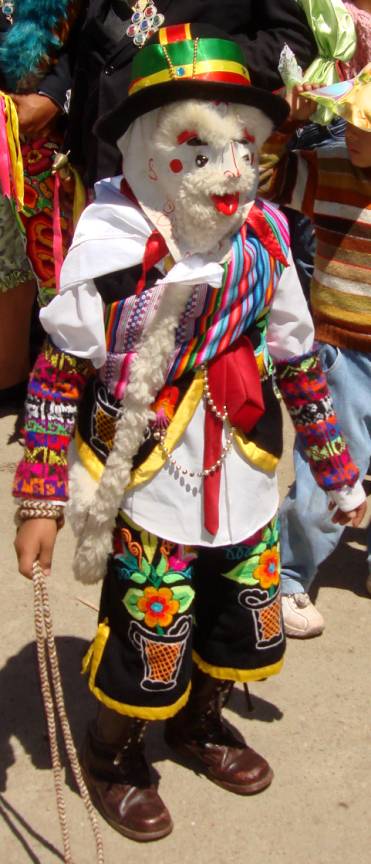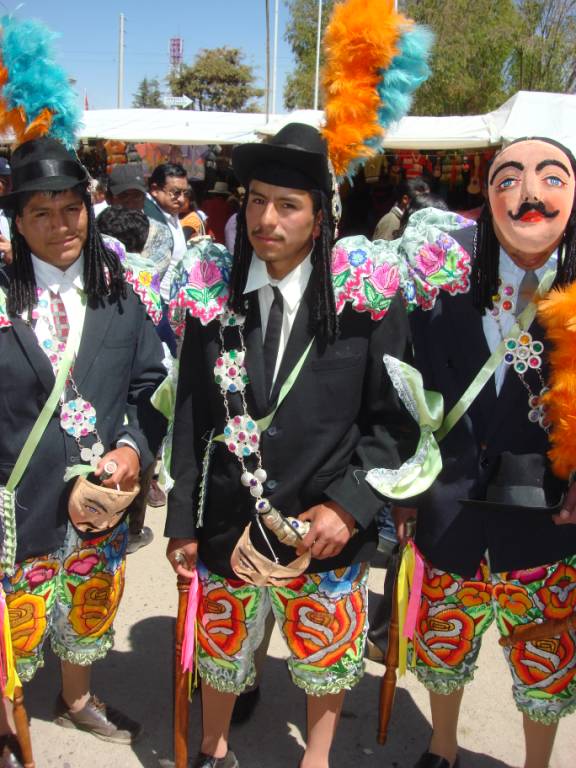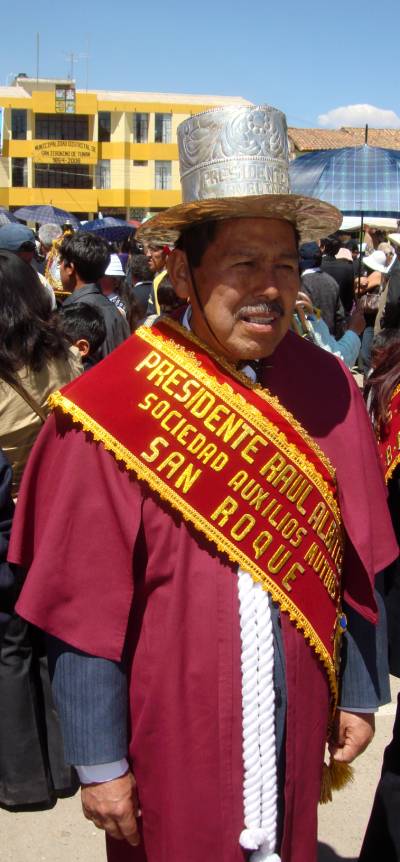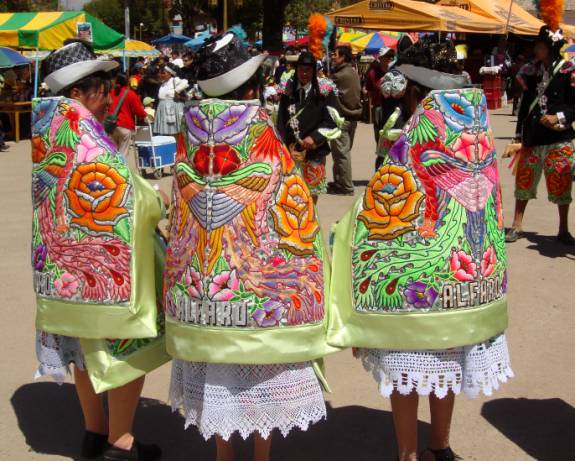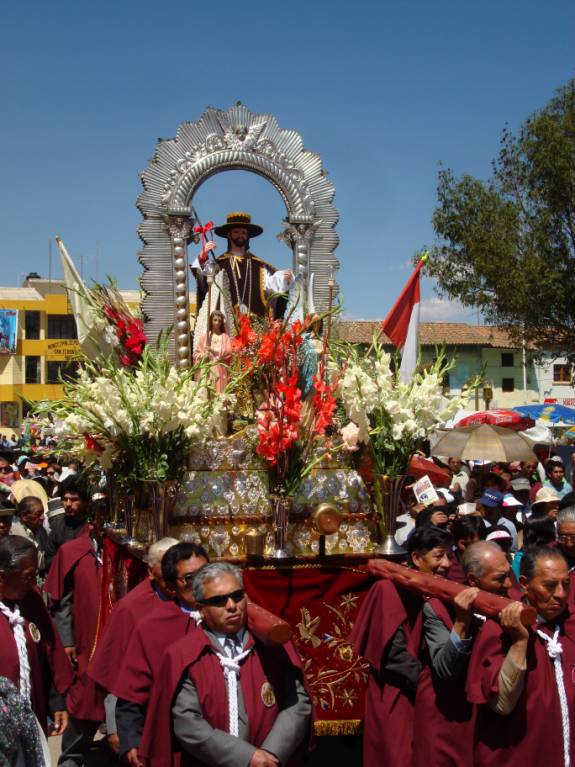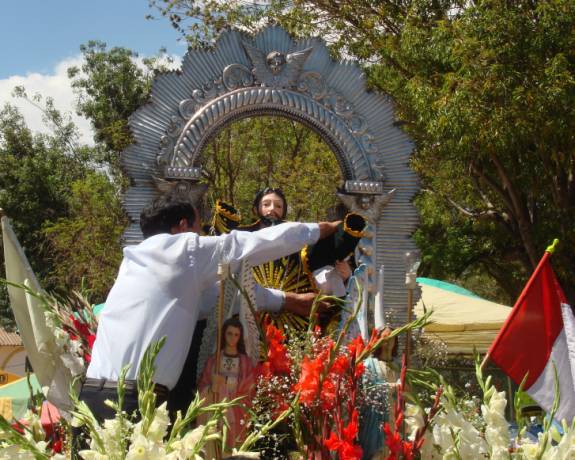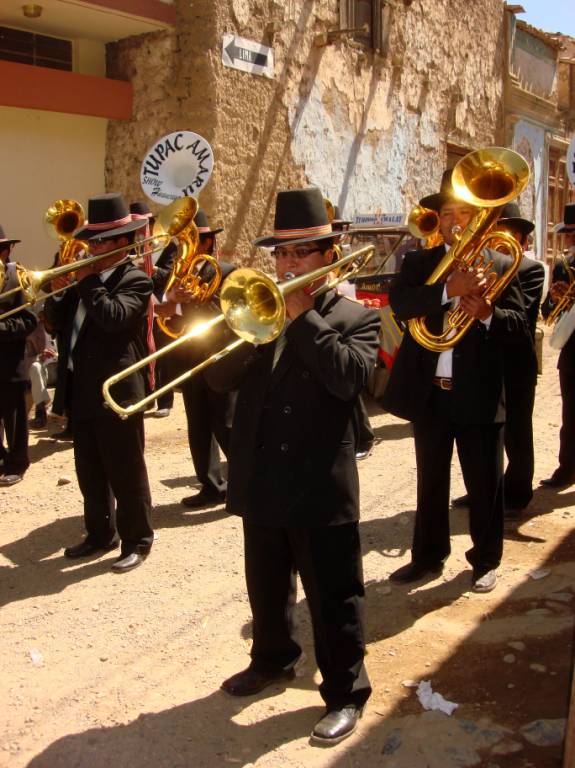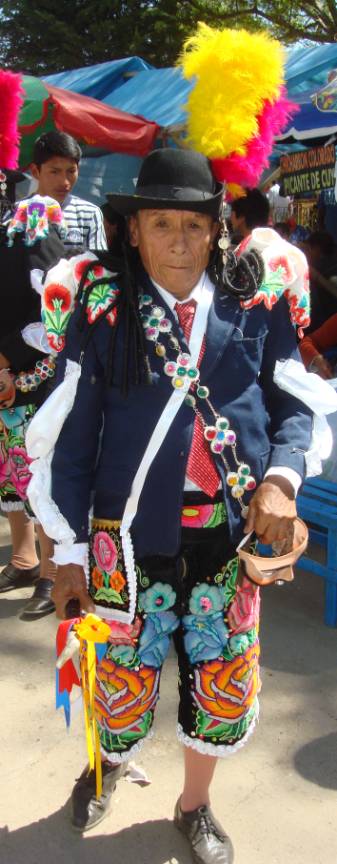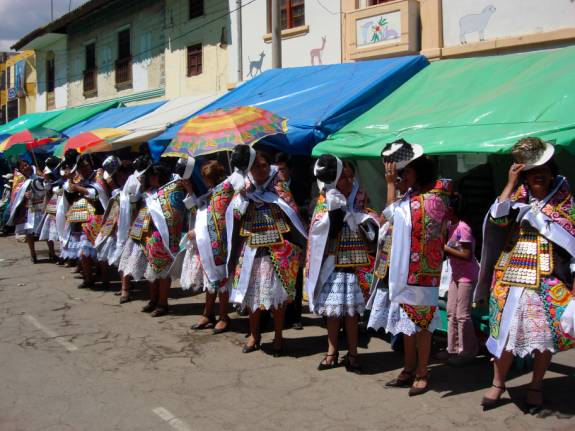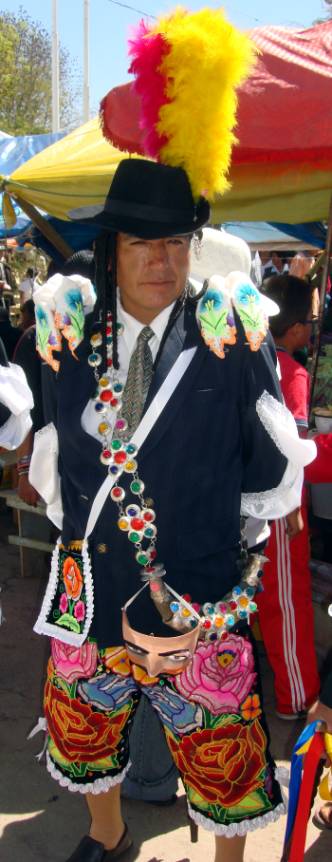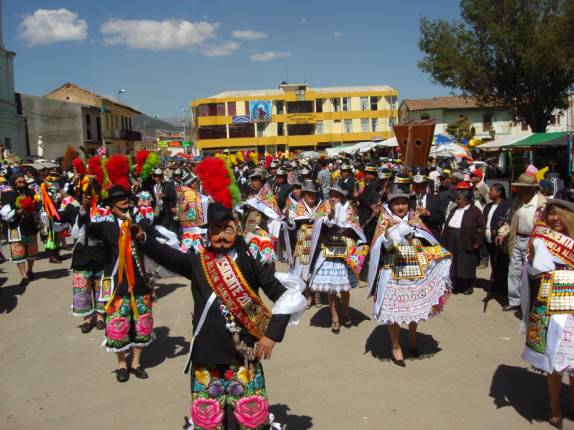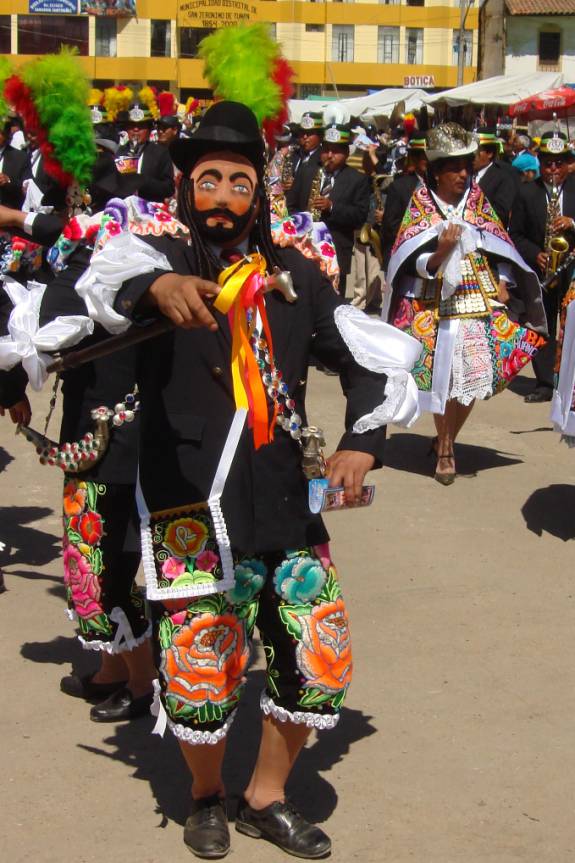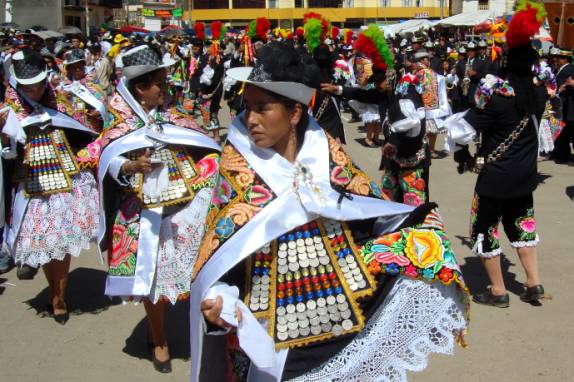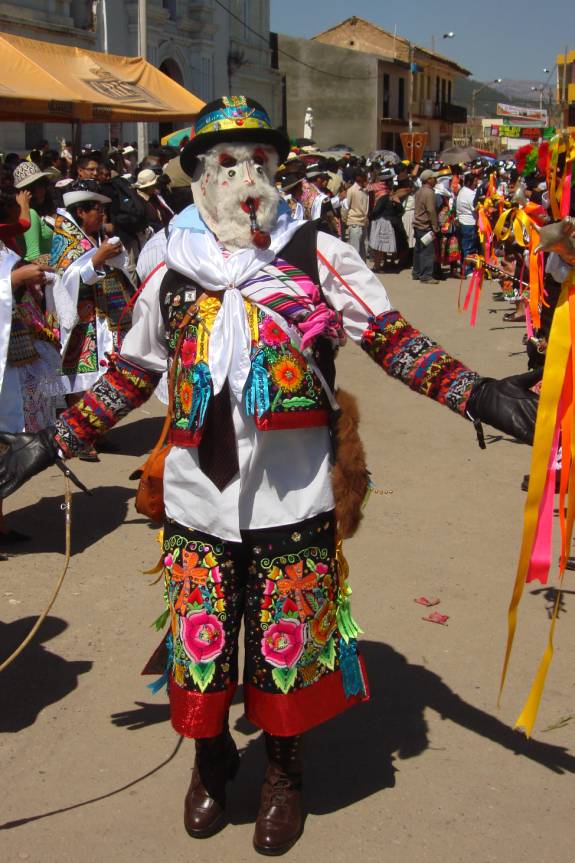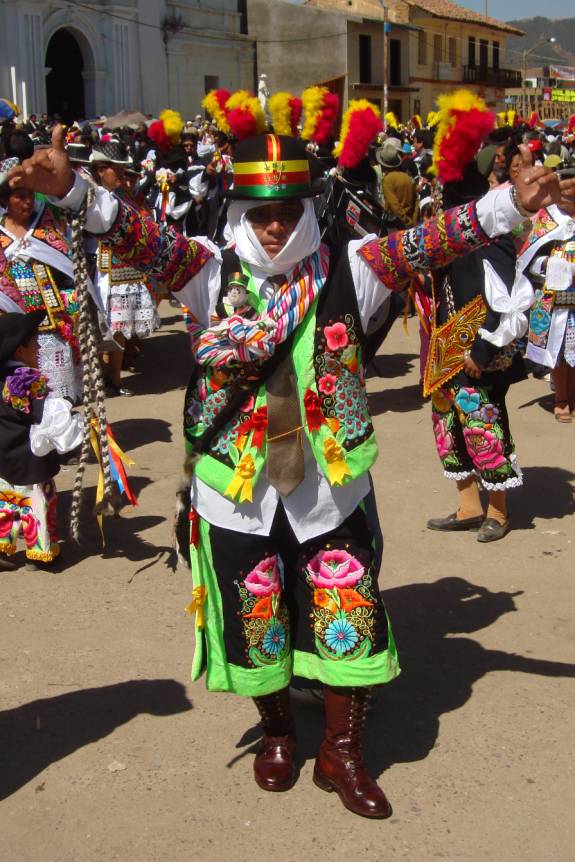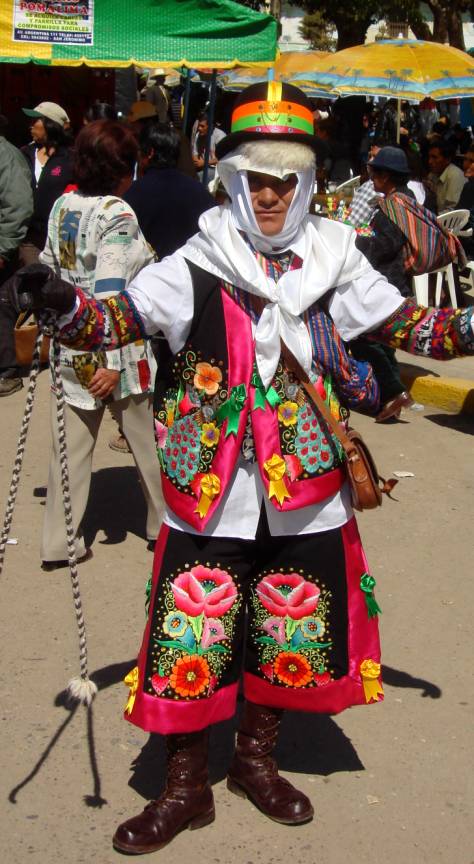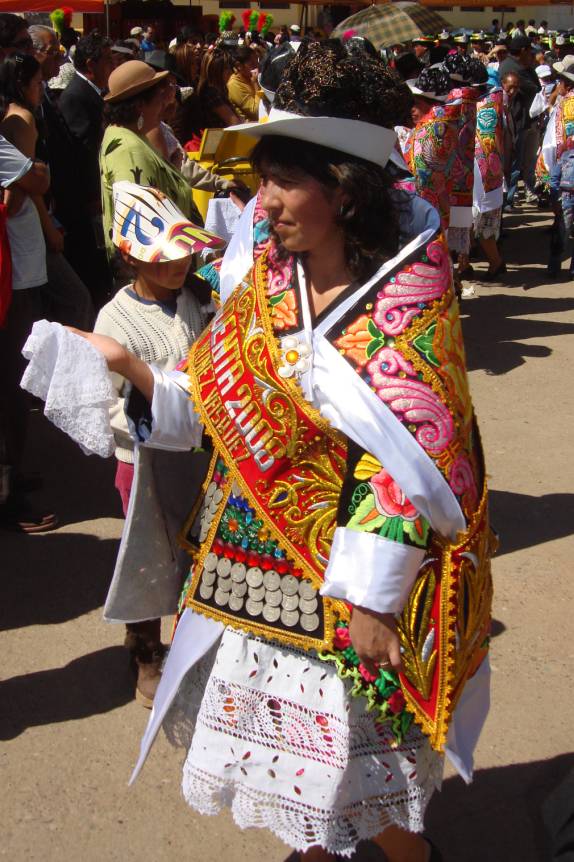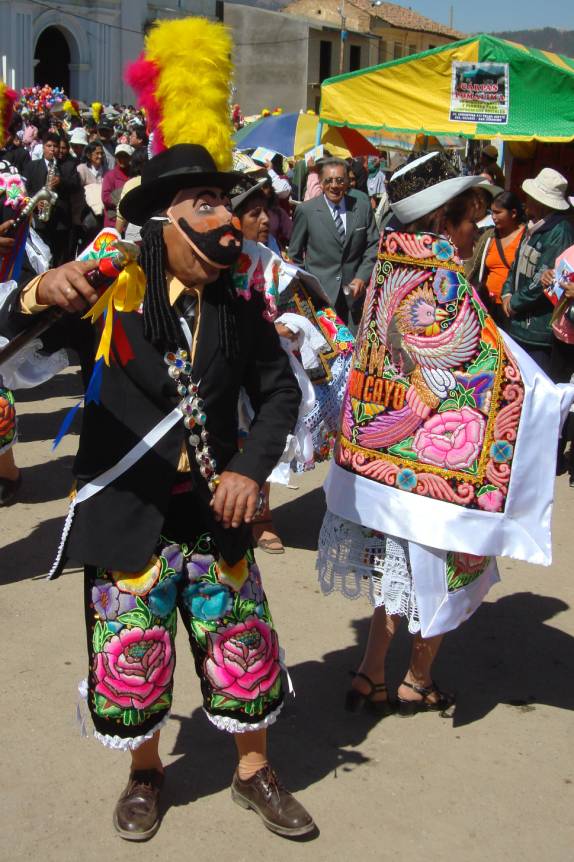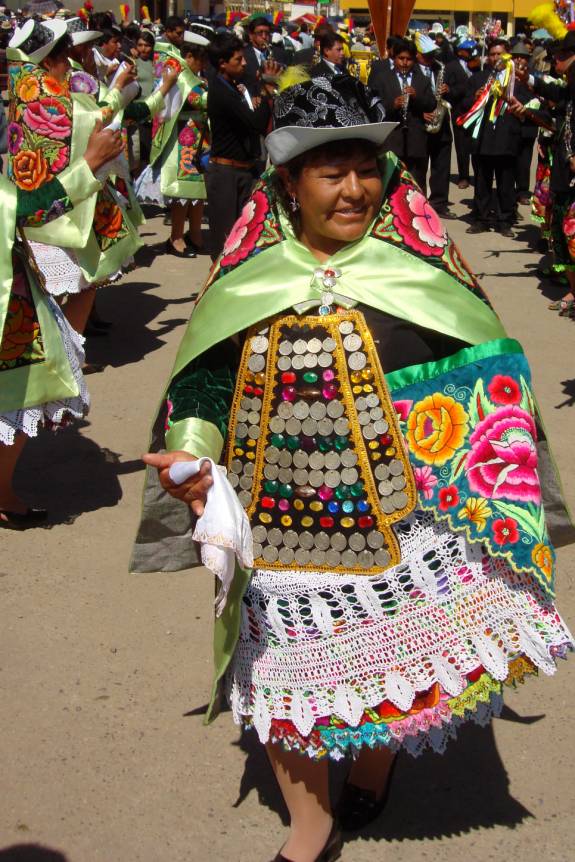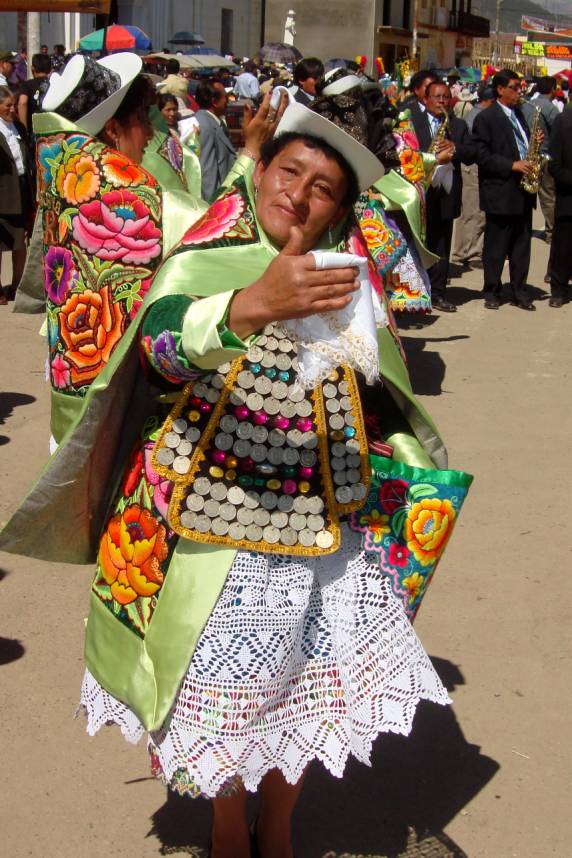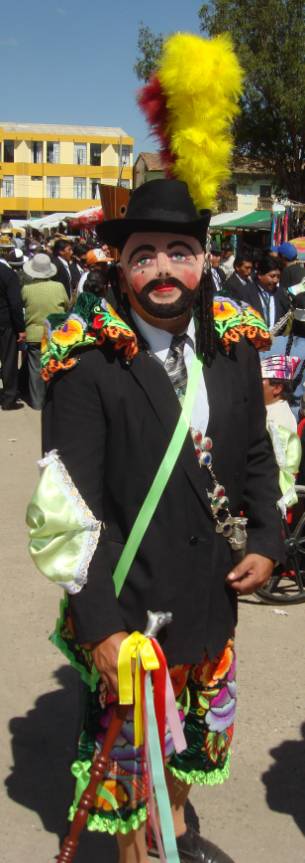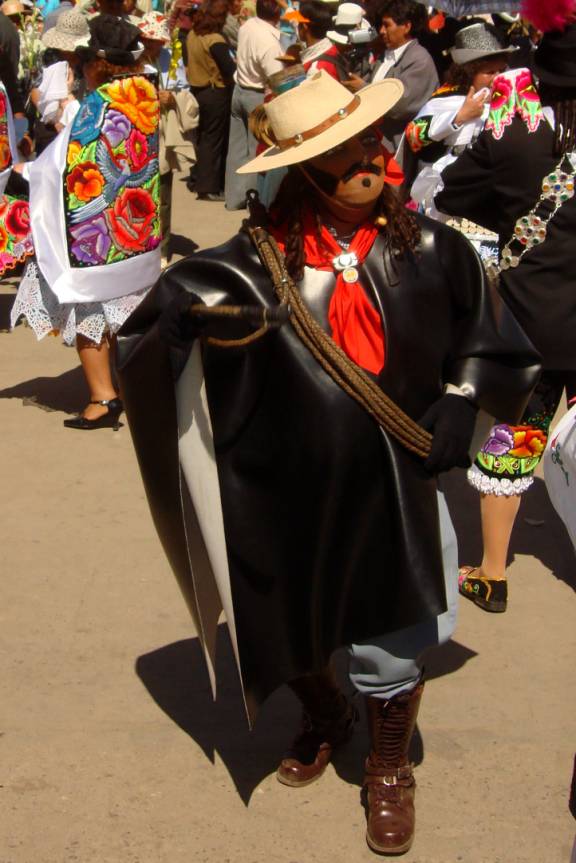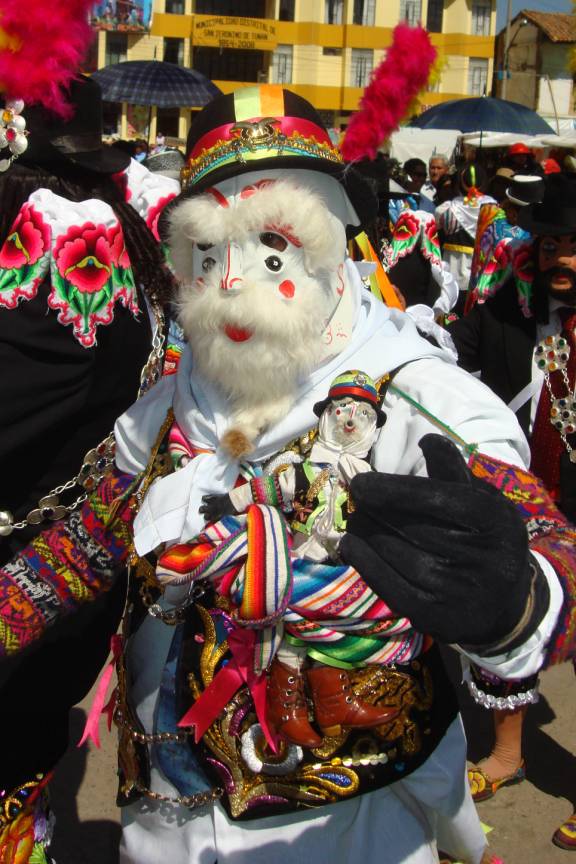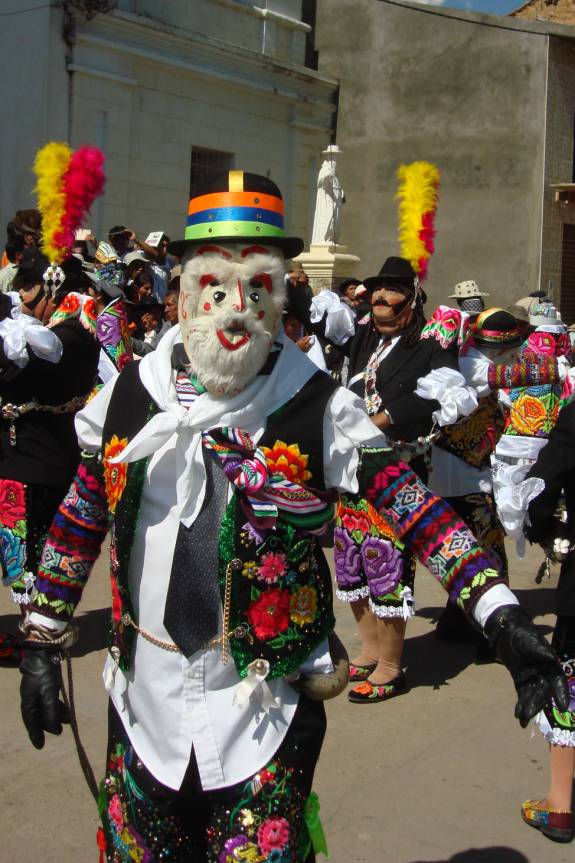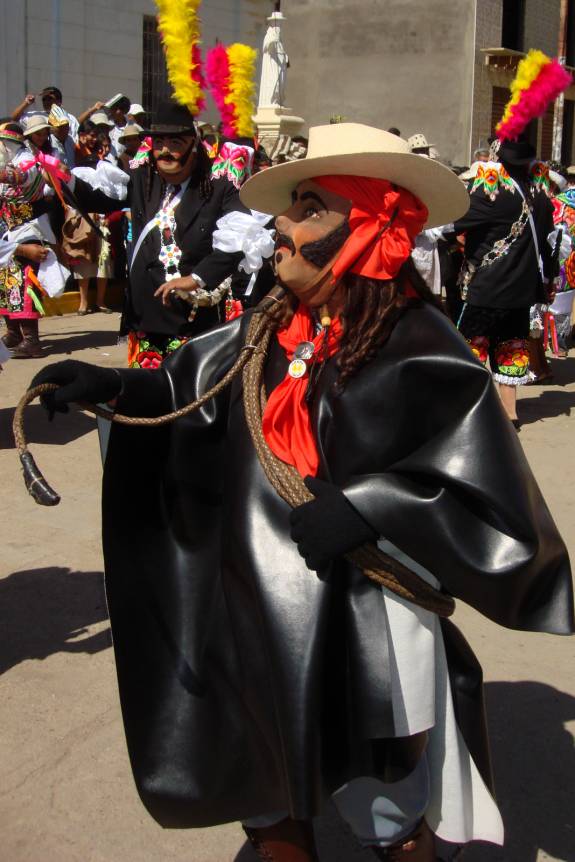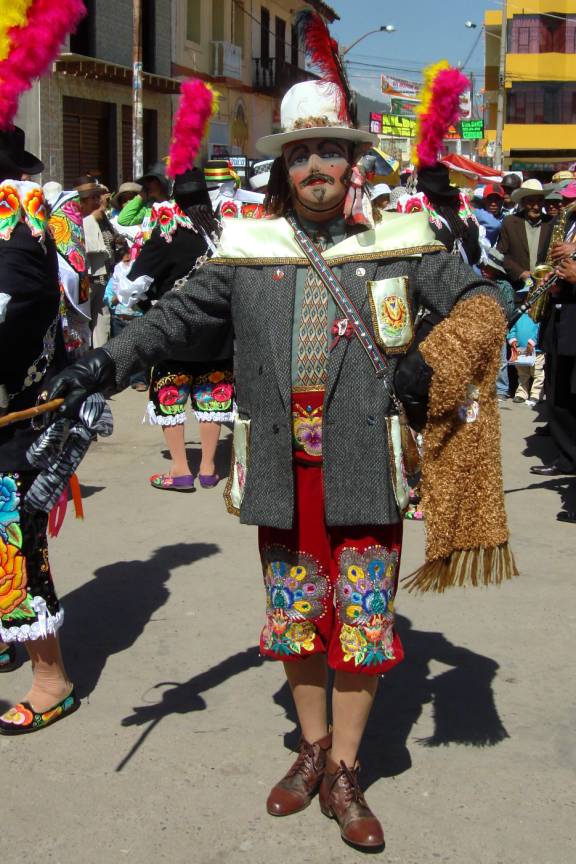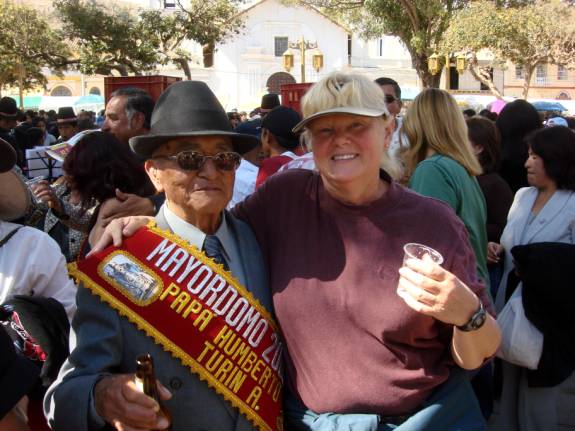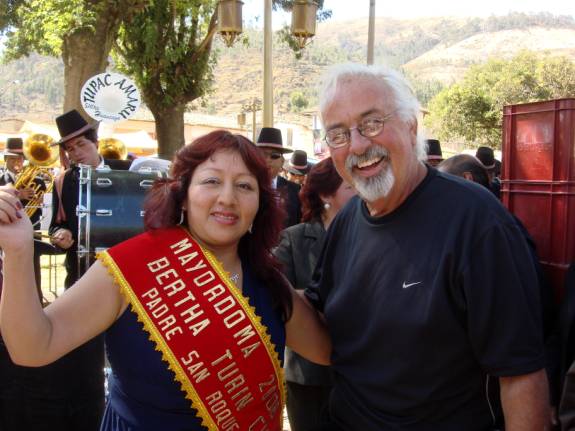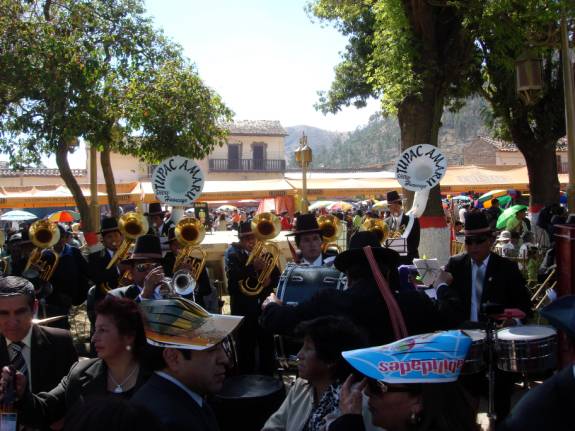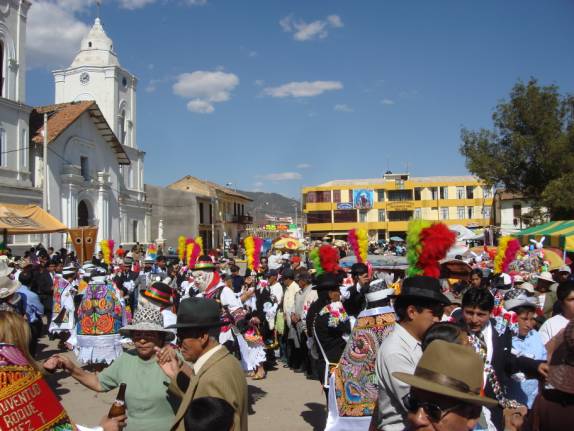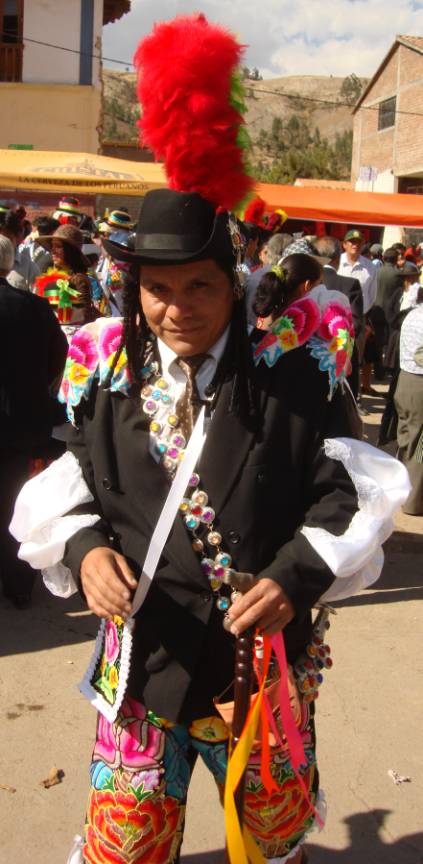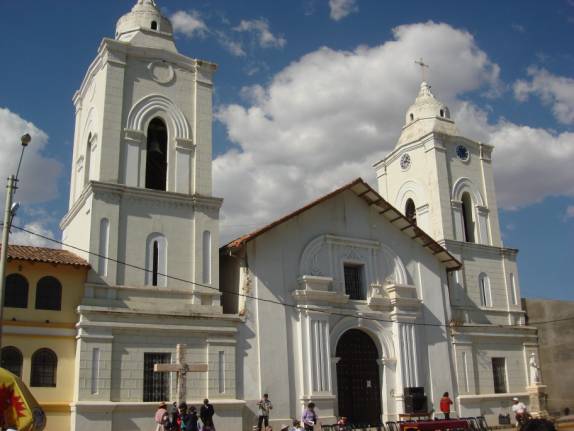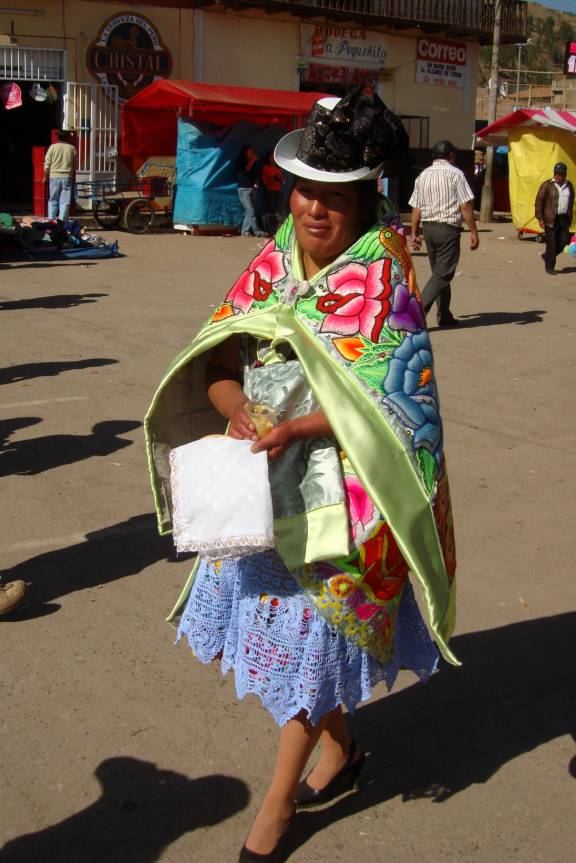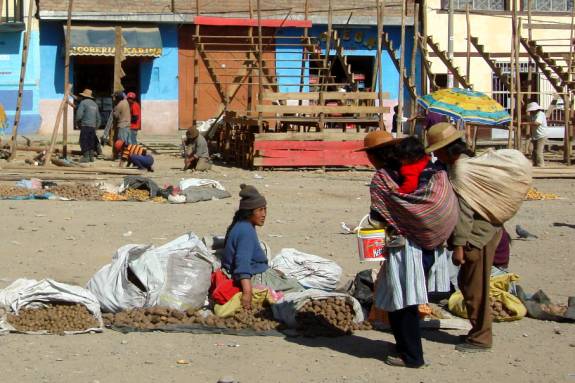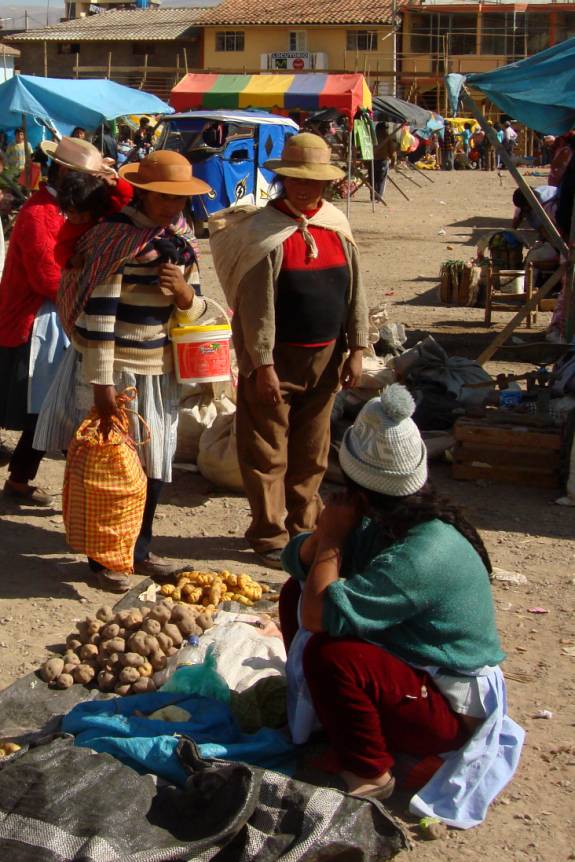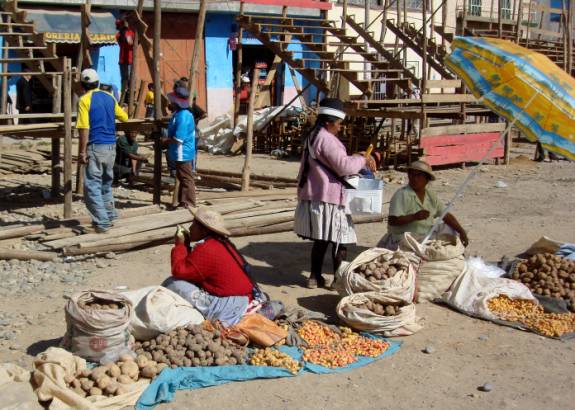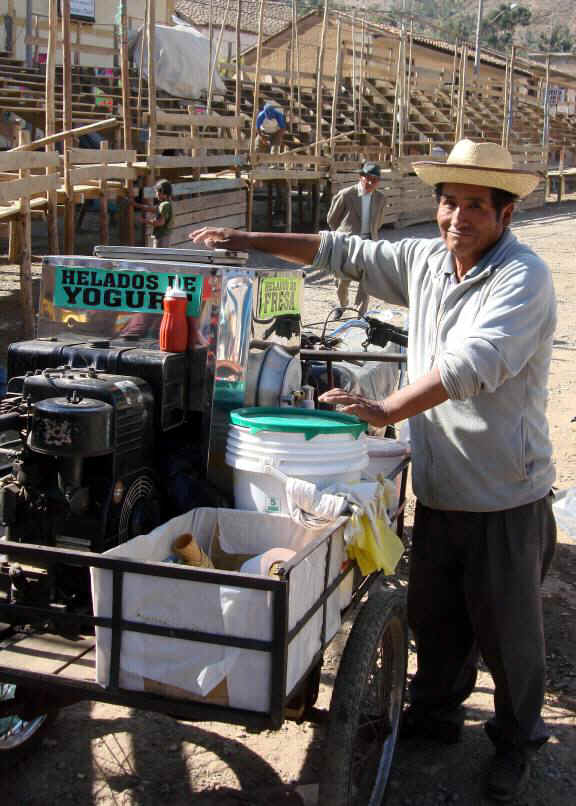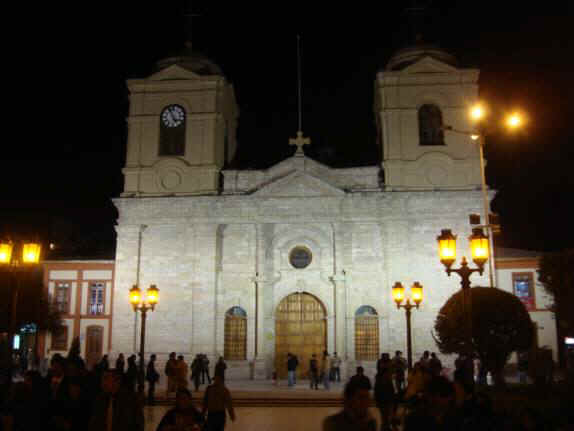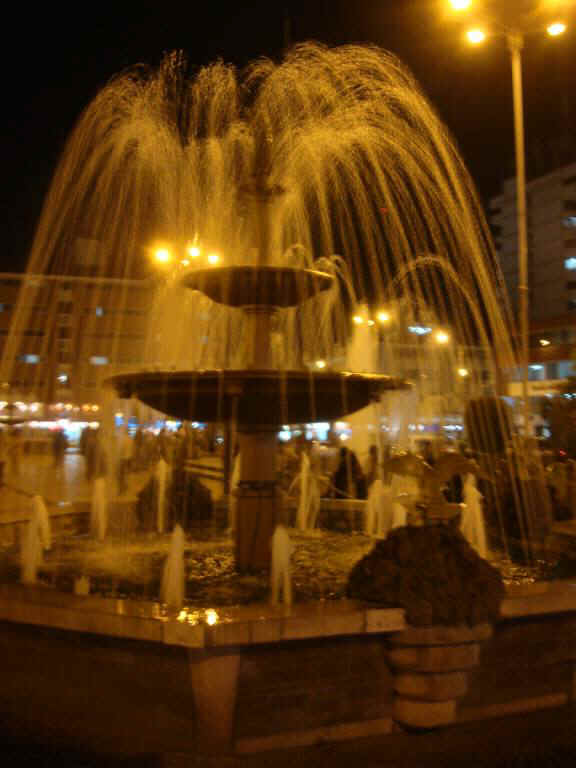|
|
|
|
Site Index:
|
UPDATE#17
08/15
thru 08/16/08
Howdy
Everybody, The
adventures of 2008 from 1/1/08 through 08/14/08 have been published on the
website.
We continue with the latest edition. UPDATE
2008 #17
08/15/08 through 08/16/08. At
last update, we were enjoying our adventure trip to the South American country
of Peru.
We had returned to the capital city of Lima to be ready for our train
trip to the central highland city of Huancayo. 08/15/08
FRIDAY
LIMA to HUANCAYO
It was still dark out when the alarm sounded at 5:30am.
In less than 45 minutes, we were away from the Hostal San Francisco and
walking to Estacion Desamparados (Lima’s train station).
Passengers in Servicio Turistico (Tourist Class) lined up to check their
luggage.
It was probably a good thing that we had picked up our tickets a couple
of days ago at the main office because we didn’t see any place around the
train station this morning.
Todos a bordo…… (All Aboard…).
Our reserved seats (#37 and #40) were located in Coche #1.
Precisely on time, the powerful locomotive pushed 4 Tourist Class cars, 2
Classic Class cars, a Bar/Observation car, and a Baggage car out of the
Desamparados Station at 7am.
In our coach, all the seats face the same direction.
We were somewhat surprised that we were all facing backwards as we moved
out of the station.
The train motored through the city zones and soon began the long climb
upward from the Lima coast.
This idle coach appears to have been a private unit, perhaps for a
railroad executive.
About an hour into the trip, we came to a stop where the locomotive
disconnected from the train of coaches.
The end car serves as an open observation area combined with a bar
service area.
The huge locomotive motored onto this giant turntable.
Two men strained to manually turn the hulk around.
Reattached to the opposite end of the train, our coach was now headed
forward and our seats were facing in the optimum direction for scenic viewing.
The Classic coaches were now at the front end of the train.
There were lots of bridges for the train to cross.
This particular one is the highest on the route.
The Bar car soon became a popular hangout for the fun-loving passengers.
There were very few foreign tourists aboard.
Most of the passengers were folks from Lima or other Peruvian cities
ready to enjoy a long weekend in the mountains.
Lots of tunnels cut through the mountains providing a passageway for the
many miles of iron rails.
As the train climbed and climbed into the mighty Andes Mountains, the
rails hugged even closer to the steep edges of the cliff faces.
Strategically situated trackside workers carefully observed the smooth
operation of the railroad.
Kilometer after kilometer, mile after mile, and curve after curve, the
train negotiated the terrain providing spectacular scenic views.
The Tourist Class coaches offer the most comfortable seats.
At a bit lower ticket price, the Servicio Clasico (standard, classic
class) offers opposite facing seats with a small table in between.
The second set of tracks in this picture would not have given us a very
smooth ride.
The rail line often parallels the Rímac River.
In general, the left side of the train seemed to offer better
opportunities for more scenic views.
This remarkable feat of railroad engineering traverses 535 kilometers of
iron rail, passes through 69 tunnels, crosses over 58 bridges, and negotiates 6
zigzag switchbacks.
The music played, the Pisco Sour cocktails flowed, and the jovial
passengers danced in glee.
An interesting note, all those colorful balloons in the bar area were
blown up at near sea level.
As the train climbed higher and higher, the ambient air pressure dropped
around the balloons.
This caused the balloons to expand and expand with each increase in
altitude.
Reaching their strength limits, the balloons would burst intermittently.
By the time the train reached its highest elevation, all of the balloons
had ruptured with their resounding and familiar “popping” report.
The tracks
cross into the Provincial Department of Junín via the Galera Tunnel, the
highest railroad tunnel in the world. Numerous
people on the train were suffering with “Soroche” (altitude sickness).
The train crew included a Registered Nurse that administered oxygen and
had many of those passengers sniffing cotton balls soaked with rubbing alcohol.
The lady seated next to Judy was shivering and feeling very ill.
We would guess that about 75% of the travelers were sleeping at these
extreme altitudes.
The Ferrocarril Central Andino railroad maintains the honor of being the
highest line in all of the Americas and boasts of the second highest railway
station in the world (after the line to Tibet), with the Galera station at 4871
meters (15,681 feet) above sea level.
At almost 16,000 feet, the air is very thin and very cold.
The train reached La Oroya where the sets of track split with our
passenger train heading in the direction of Huancayo.
The route descends toward the Mantero Valley.
When the train arrived at the Huancayo station at 7:30pm, we had been
traveling for twelve and a half hours.
The distribution of luggage was sheer pandemonium.
All of the Tourist Class passengers congregated at a gate where the
baggage carts were arriving.
What had been an organized procedure at check-in, complete with numbered
tags and receipts, turned into a free-for-all for the distribution.
People were yelling out for bags and the handlers just collected a pile
of receipts and handed out the bags to who ever shouted the loudest.
Fortunately, we were able to easily identify our bags by the brightly
colored belts that we had cinched around them.
A cardboard sign bore our names signaling that the host was expecting us
and would escort us to our hostal.
He summoned a taxi for the 10-minute ride to the Hostal Peru Andino on
Av. San Antonio, 113.
Our host escorted us to a neighborhood Chinese restaurant called “Chifa
Centro”.
It was wonderfully clean and nicely decorated.
The food was quite delicious and economical. 08/16/08
SATURDAY
HUANCAYO-SAN GERONIMO-HUANCAYO
My original plan was to take another train trip to the Mantero Valley
town of Huancavelica.
I was initially disappointed to learn that the entire rail line was
closed for major renovation and conversion of the tracks.
No trains would recommence until late September.
Our hostal host told us that there was a big celebration occurring in the
village of San Geronimo.
What began as disappointment about the train closure turned into total
elation with this celebratory event.
At the corner of Avenida Ferrocarril & Calle Uruguay, we crammed into
a fully jam-packed Combi Collectivo Minivan for the 30-trip.
The organization for the day’s events was just beginning.
Most local villages in Peru have a special day each year to celebrate
their patron saint.
For this village, the revered is Padre San Roque.
Centering around the main Plaza de Armas and the Cathedral, the people
were already assembling in droves.
Several street decorations were artistically designed and laid out on the
ground.
Handmade of colored flower petals, wood chips, and brightly tinted
grains, the effects were intriguing.
In a large, open area located behind the Cathedral, the weekend market
was in full swing.
Some of the interesting items were these huge, whole roasted pigs.
The vendors were eager to pull off any section, portion, or amount of the
tender meat that you might desire.
Every bit of the animal was available for hungry carnivores.
From the internal organs to the succulent loin meat, the choice is yours.
What savory morsels would you pick?
Perhaps, you might prefer to cook your own slab of meat.
Fowl, mutton, goat, and beef were all available.
How about a chunk of homemade cheese to go with that chicken leg?
I know these colorful tubers look like potatoes, however, they are
actually “Ocas”.
They are very beautiful in appearance and are frequently a main dish
staple in Andean homes.
Andean breads, handmade by the indigenous people, fill baskets
everywhere.
Their dark, crusty color comes from the use of unleavened dough.
Local groups performed dance routines in the main Plaza de Armas.
To honor the patron saint, local communities select different colors to
represent their locality.
These faithful believers respectfully display purple, white, and red
adornments for their beloved saint.
Later, the statue of the saint will be adorned with these different
outfits.
Inside the Cathedral, the statue of Saint Roque is adorned with flowers,
artifacts, and lit candles.
At present, the robe is colored “green”.
A solemn service gathered the faithful at the altar.
At food vendors surrounding the main plaza, a variety of delicacies were
available.
This vendor was preparing fresh “trucha frita” (fried trout).
A local native woman arranges her decorative touches to this street
design.
When the festive parade begins, the artwork will be trampled in a few
minutes.
“Cabrito” (baby goat) is being roasted over open coals by this
sidewalk vendor.
Would you prefer a leg portion or a slab of ribs?
This was another wonderful example of the street art.
Back in the market section, these Andean natives offer a variety of
potatoes, huge carrots, and other fresh vegetables. In Peru, over 300 different
varieties of potatoes are grown.
Meanwhile, brisk sales of the pulled pork are dwindling the supplies.
Perhaps you’d rather a “torta” (sandwich) or a fresh juice drink.
Nope, “it ain’t McDonalds” but this is tasty dining, Peruvian
style.
Perhaps, you are looking to impress your new "Boss" or your
"Mother-in-Law", with a special dinner. This vendor was
offering some rather unusual choices for your fanciest culinary extravaganza.
You could get “live bullfrogs”, “dried bullfrogs”, or maybe, just
maybe, you have that irresistible hankering for some exotic species of wild bird.
The ultimate selection is up to you.
You know, I’ve never seen even one recipe for any of these ingredients
on the TV “Food Channel”.
Many of the celebrants were decoratively dressed in traditional,
folkloric outfits.
In the native, folkloric dances, this character represents the “Alpaca”
animal.
Of course, this sinister character represents “El Diablo” (the
Devil).
The more established members of the native community frequently
perpetuate the ancient and traditional modes of dress, as well as their typical
ways of life.
Groups of folks from surrounding communities join together to perform
interpretive folkloric dances.
These traditions have been handed down for generations.
These elegant outfits represent many hours, days, or, perhaps, months of
their labor of love.
The folkloric dances tell the stories of history and religion. Many South
American universities have entire courses of study pertaining to the nature and
history of these performances.
The dances of this region have a wonderful level of refined elegance.
Training and participation begins at a young persons age.
Dressed in ceremonial robe, bright sash, and silver metal hat, Senor Raul
is this year’s President for the San Roque event.
These gorgeous, caped outfits are colorful and were hand embroidered.
Their dance is smooth and gentle.
The statue of the patron saint is hand carried from the Cathedral,
through the streets, and around the Plaza.
Each community group will carry the heavy statue adorned in the color of
clothes associated with their group.
Notice that San Roque is currently dressed in a dark purple hat and robe.
As the parade continues, the carrying group changes and the
statue’s outfit is changed to that of the new group.
Here, the outfit is being changed to a dark blue.
Groups of bands play in the procession.
This band, the Tupac Amaru Show hails from Huancayo.
They are well known as the best group of its kind in all the central
highlands.
From the very young to the very experienced, the folkloric traditions are
held dear to the populace.
There were literally hundreds of local participants involved.
Each group was rightfully proud of their representation.
The heritage of a proud people is perpetuated by the honor of
participation.
The story is written in the expressions of the dance.
Their glorious history is seen through the eyes of those fortunate enough
to witness the proud faces of these indigenous natives.
El Diablo (the devil) prances and struts in an obvious attempt to subvert
the faithful.
Many of the “Alpaca” characters carry a small replica of their
likeness with them.
Swirling, tempting, and luring, El Diablo is unsuccessful in dissuading
these ethical followers of Christianity.
As the official parade concluded, large groups assembled in the main
Plaza.
Many groups had hired bands to play for their listening and dancing
pleasure.
This particular group welcomed us with open arms.
Judy was an instant hit with Papa Humberto.
The group had large cases of beer brought in for their friends.
You can just see the tall stacks of cases in the background.
Papa and Judy enjoyed tossing back a few.
To the impressive music of the Tupac Amaru band, I got the opportunity to
dance and pose with the Mayordoma of the event.
The sophisticated group of apparently wealthy revelers welcomed us in a
most hospitable way.
They invited us to share their music, their dancing, and their cups of
Peruvian beer.
The band was excellent and played many familiar tunes.
One of the things that especially endeared the people to us happened by
chance.
Some years ago, a group called “The Village People” recorded a song
called “YMCA’.
This song evolved into a special dance routine that had you moving your
arms in such a way as to spell the letters “Y.M.C.A”.
When the band played to music, Judy and I automatically started into the
familiar dance steps.
Of course, all eyes were on us doing the strange motions in sequence.
A few folks also knew the routine and joined right in.
Soon, we were a recognizable hit.
From that moment on, the offers of cups of beer were frequently extended.
Out of all these people at the festival, I think that we were the only
Caucasian folks in the crowd.
All afternoon, the streets remained filled with celebrants.
As the afternoon progressed, attention to the Cathedral diminished in
favor of the festive spirit of the music and celebration.
Still in the market section, the native vendors continued to hawk their
sacks of potatoes.
In the US, the prices for potatoes have skyrocketed to over $5 for a
5-pound bag.
In Peru markets, a kilo (2.2 pounds) will only cost you about 35 cents
equivalent.
In this community of San Geronimo, the celebration will continue for some
days ahead.
Workmen are setting up these rickety-looking grandstands for a bullfight
that will take place soon.
Their haphazard construction and temporary lashing and support made them
of questionable safety.
We will not be able to stay for the bullfight.
This enterprising vendor is justifiably proud of his special cart that
makes “Frozen Yogurt”.
The gasoline engine powers the freezer rig and a small motorcycle propels
the unit around.
This is upscale.
You won’t find many others around to match this beauty.
How about a strawberry flavored ice cream?
As the afternoon waned, we reluctantly returned to Huancayo.
Our day had been magnificent and will remain a remarkable highlight in
our adventures in Peru.
What had started out as a disappointing day transformed into something
that will be etched in our memories forever.
It just goes to show, “You can never know what joys lie just around the
corner” when you chance to adventure.
In Huancayo center, the local Iglesia (church) was brightly illuminated.
The fountain in the main Plaza de Armas was tranquil and relaxing.
Tired from all the exciting activities, we were happy to rest peacefully
in the comfortable hostal. TO
BE CONTINUED…SOON…
Please let us know if you have any special suggestions and thoughts.
Thanks for allowing us to share our life and adventures with you. "AMARSE". is pronounced "AM-ARE-SAY".
Lotsa
Luv, Fred
Reed and Judy Law AMARSE MT40 Our
website is: www.amarse.net .
|
|
Fred H. Reed |
www.amarse.net © 2006 2007 2008 2009 2010 2011 |

